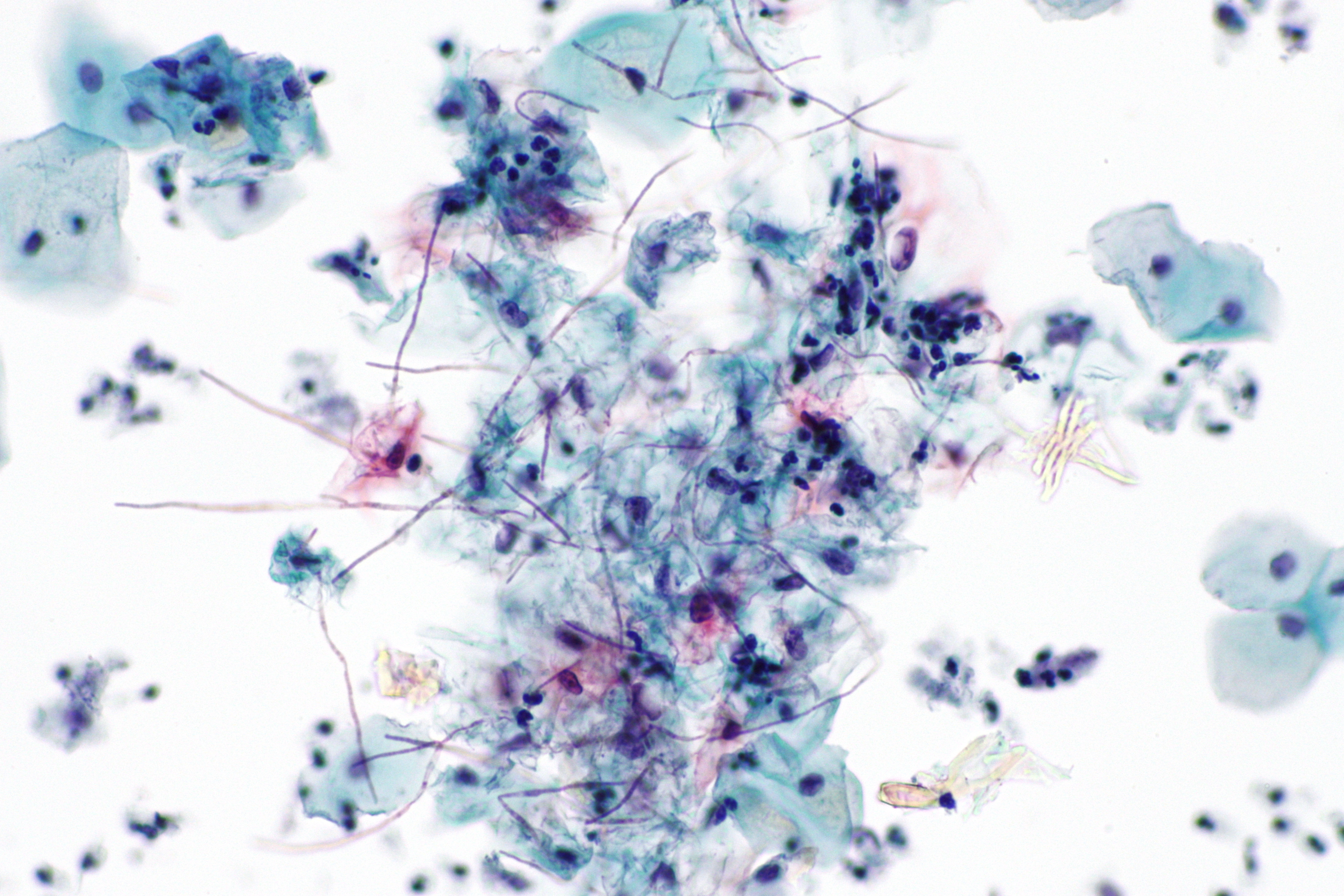Can yeast infections be dangerous. Untreated Yeast Infections: Risks and Consequences Explained
Can yeast infections become dangerous if left untreated. What are the potential complications of ignoring a yeast infection. How long can you safely wait before seeking treatment for a yeast infection. Are there any long-term effects of recurring yeast infections.
Understanding Yeast Infections: Prevalence and Symptoms
Yeast infections, also known as genital candidiasis, are a common issue affecting millions of women worldwide. The Centers for Disease Control and Prevention (CDC) estimates that nearly 75% of women will experience at least one yeast infection in their lifetime, with up to 45% facing recurring infections. These infections are caused by an overgrowth of the fungus Candida, typically Candida albicans.
Recognizing the symptoms of a yeast infection is crucial for proper diagnosis and treatment. Common signs include:
- Intense itching and burning sensation in the vaginal area
- Redness and swelling of the vulva and vagina
- Thick, white, odorless discharge resembling cottage cheese
- Pain or discomfort during sexual intercourse
- Burning sensation while urinating
It’s important to note that these symptoms can also be indicative of other conditions, including sexually transmitted infections. Therefore, accurate diagnosis by a healthcare professional is essential, especially for first-time infections.

The Dangers of Untreated Yeast Infections
While yeast infections are not typically life-threatening, leaving them untreated can lead to various complications and discomfort. The primary risk of an untreated yeast infection is the potential for it to develop into a severe infection.
When left unchecked, the Candida fungus can proliferate and become deeply embedded in the vaginal tissue. This can result in:
- Intensified symptoms, including severe itching and burning
- Widespread inflammation of the genital area
- Increased risk of recurrent infections
- Potential spread of the infection to other areas of the body
Is it possible for a yeast infection to spread to other parts of the body? In rare cases, particularly in individuals with weakened immune systems, untreated yeast infections can lead to systemic candidiasis. This occurs when the Candida fungus enters the bloodstream and affects other organs, potentially causing serious health complications.
Complications of Chronic Yeast Infections
Recurring or chronic yeast infections can have long-term effects on a woman’s health and well-being. These may include:

- Psychological distress and reduced quality of life
- Sexual dysfunction and relationship strain
- Increased susceptibility to other vaginal infections
- Potential impact on fertility
How do chronic yeast infections affect fertility? While yeast infections themselves don’t directly cause infertility, the inflammation and changes in vaginal pH associated with recurrent infections can create an environment less conducive to conception. Additionally, the discomfort during intercourse may lead to less frequent sexual activity, potentially reducing the chances of conception.
The Importance of Proper Diagnosis and Treatment
Self-diagnosis and over-the-counter treatments may seem convenient, but they can be risky. Dr. Patricia Sulak, a board-certified OB/GYN and professor at the Texas A&M College of Medicine, emphasizes the importance of consulting a healthcare provider, especially for first-time symptoms.
Why is professional diagnosis crucial for vaginal infections? Many conditions can mimic the symptoms of a yeast infection, including:
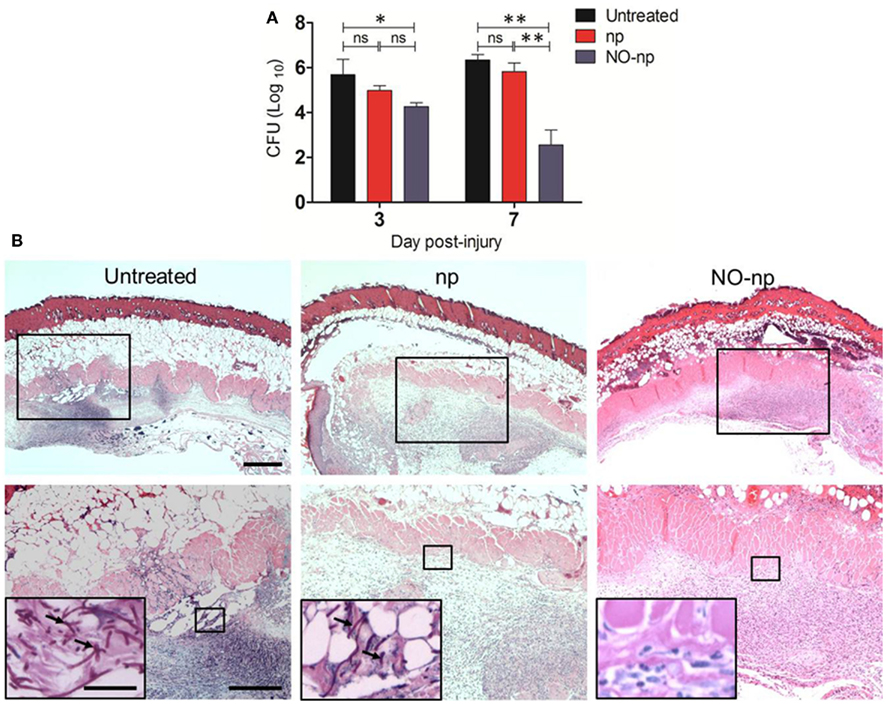
- Bacterial vaginosis
- Sexually transmitted infections like chlamydia or gonorrhea
- Allergic reactions or chemical irritation
- Genital herpes
Misdiagnosis and inappropriate treatment can lead to persistent symptoms and potential complications. A healthcare provider can perform the necessary tests to ensure accurate diagnosis and prescribe the most effective treatment.
Treatment Options for Yeast Infections
Once properly diagnosed, yeast infections are highly treatable. Treatment options include:
- Over-the-counter antifungal creams, ointments, or suppositories
- Prescription oral antifungal medications
- Long-term maintenance therapy for recurrent infections
How effective are over-the-counter treatments for yeast infections? While OTC treatments can be effective for uncomplicated yeast infections, it’s crucial to ensure you’re using a product that contains an actual antifungal agent. Dr. Sulak warns that some products marketed for yeast infections only contain local anesthetics to alleviate symptoms without addressing the underlying infection.

For recurring or severe infections, prescription oral medications like fluconazole may be necessary. These treatments can provide faster relief and more comprehensive management of chronic infections.
Prevention Strategies for Yeast Infections
Preventing yeast infections is often easier than treating them. Here are some strategies to reduce your risk:
- Maintain good hygiene practices
- Avoid douching and using scented feminine products
- Wear breathable, cotton underwear
- Change out of wet or sweaty clothes promptly
- Manage blood sugar levels if you have diabetes
- Use antibiotics only when necessary, as they can disrupt vaginal flora
Can dietary changes help prevent yeast infections? Some studies suggest that consuming probiotic-rich foods or supplements may help maintain a healthy vaginal microbiome, potentially reducing the risk of yeast overgrowth. However, more research is needed to confirm the effectiveness of dietary interventions in preventing yeast infections.
The Link Between Yeast Infections and Other Health Conditions
While yeast infections themselves don’t typically lead to other health conditions, they can be indicative of underlying health issues. Certain factors can increase your susceptibility to yeast infections, including:

- Hormonal changes (e.g., pregnancy, menopause)
- Compromised immune system
- Uncontrolled diabetes
- Use of certain medications (e.g., antibiotics, corticosteroids)
How does diabetes affect yeast infection risk? High blood sugar levels can create an environment conducive to yeast growth. Additionally, diabetes can affect immune function, making it harder for the body to fight off infections. Managing blood sugar levels effectively can help reduce the risk of recurrent yeast infections in individuals with diabetes.
When to Seek Medical Attention for Yeast Infections
While mild yeast infections may resolve on their own or with OTC treatments, certain situations warrant immediate medical attention:
- Symptoms persist or worsen after using OTC treatments
- You experience recurrent infections (4 or more per year)
- You’re pregnant or have a weakened immune system
- You’re unsure if your symptoms are due to a yeast infection
- You have fever, severe pain, or unusual discharge
What should you expect during a medical consultation for a suspected yeast infection? Your healthcare provider will likely perform a pelvic exam and may take a sample of vaginal discharge for laboratory analysis. This helps ensure an accurate diagnosis and appropriate treatment plan.

The Role of Sexual Partners in Yeast Infection Management
While yeast infections are not typically considered sexually transmitted infections, they can sometimes be passed between sexual partners. In some cases, treating both partners may be necessary to prevent reinfection.
Should male partners be treated for yeast infections? In most cases, treatment of male partners is not necessary. However, if a man experiences symptoms of a yeast infection (such as redness, itching, or a rash on the penis), he should seek medical attention for proper diagnosis and treatment.
The Impact of Yeast Infections on Pregnancy
Pregnant women are more susceptible to yeast infections due to hormonal changes. While yeast infections during pregnancy are generally not harmful to the fetus, they can cause discomfort for the mother and should be treated promptly.
Are there safe treatments for yeast infections during pregnancy? Many topical antifungal treatments are considered safe for use during pregnancy. However, it’s crucial to consult with a healthcare provider before using any medication while pregnant. They can recommend the most appropriate and safe treatment options based on your individual situation.

The Role of Probiotics in Yeast Infection Management
Probiotics have gained attention for their potential role in maintaining vaginal health and preventing yeast infections. These beneficial bacteria may help maintain a healthy balance of microorganisms in the vagina, potentially reducing the risk of Candida overgrowth.
How effective are probiotics in preventing yeast infections? While some studies suggest that certain probiotic strains may help prevent recurrent yeast infections, more research is needed to establish definitive guidelines for their use. Some healthcare providers may recommend probiotic supplements as part of a comprehensive approach to managing recurrent yeast infections, but they should not be considered a substitute for proven antifungal treatments.
The Psychological Impact of Recurrent Yeast Infections
Chronic or recurrent yeast infections can have a significant impact on a woman’s mental health and quality of life. The persistent discomfort, anxiety about symptom recurrence, and potential effects on intimate relationships can lead to stress, depression, and decreased self-esteem.

How can women cope with the psychological effects of recurrent yeast infections? Seeking support from healthcare providers, counselors, or support groups can be beneficial. Additionally, developing a comprehensive management plan that addresses both the physical and emotional aspects of recurrent infections can help improve overall well-being and quality of life.
Emerging Research and Future Treatments for Yeast Infections
As our understanding of the vaginal microbiome and fungal infections continues to evolve, researchers are exploring new approaches to preventing and treating yeast infections. Some areas of ongoing research include:
- Development of new antifungal agents with broader spectrum activity
- Exploration of the potential for vaginal microbiome transplants
- Investigation of novel delivery methods for antifungal medications
- Studies on the role of the immune system in preventing yeast overgrowth
What promising new treatments for yeast infections are on the horizon? While it’s too early to predict specific breakthroughs, the growing focus on personalized medicine and microbiome research may lead to more targeted and effective treatments for yeast infections in the future. These advancements could potentially reduce the frequency of recurrent infections and improve overall vaginal health.
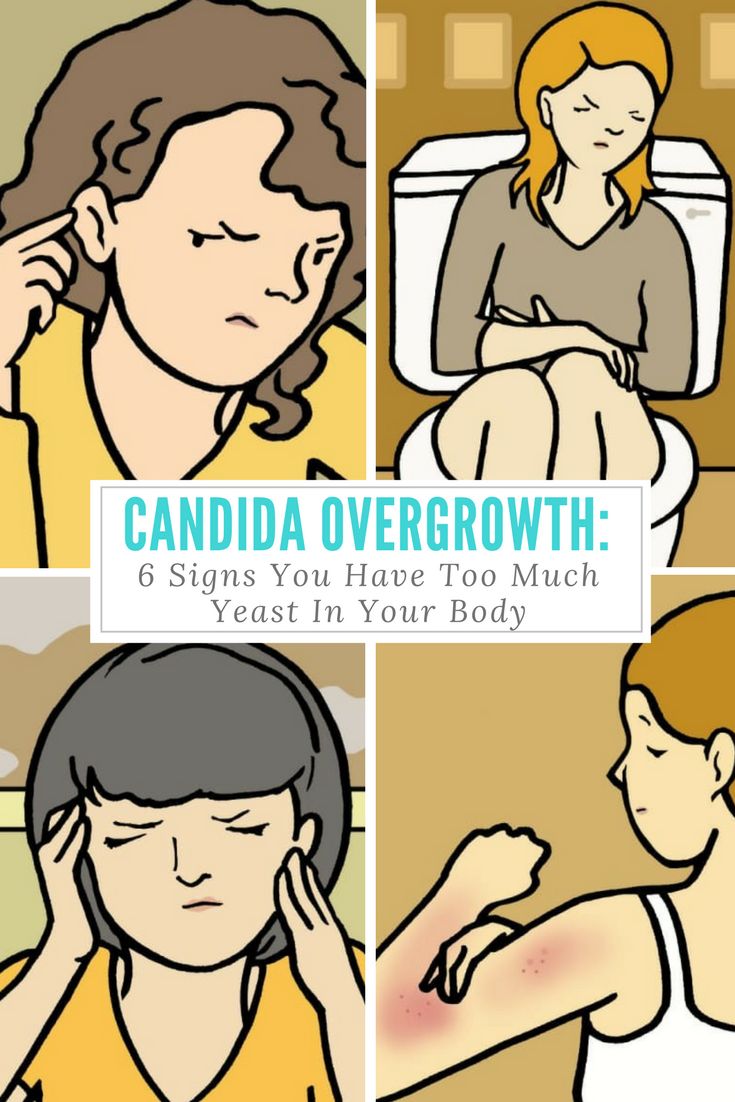
In conclusion, while yeast infections are common and generally not dangerous, leaving them untreated can lead to increased discomfort and potential complications. Proper diagnosis, timely treatment, and preventive measures are key to managing these infections effectively and maintaining optimal vaginal health. If you experience symptoms of a yeast infection, especially for the first time, it’s crucial to consult with a healthcare provider for accurate diagnosis and appropriate treatment. By staying informed and proactive about your vaginal health, you can minimize the impact of yeast infections on your overall well-being and quality of life.
Is it okay to ‘tough out’ a yeast infection? Self-diagnosing below the belt isn’t always a smart decision — ScienceDaily
Itching, burning, redness — a yeast infection can be a total pain. While they aren’t life-threatening, yeast infections are irritating — both physically and mentally. So, when undesirable symptoms appear ‘down there,’ should you consult your physician or self diagnose and treat with over-the-counter (OTC) medications?
First things first, unfortunately, almost all women will experience at least one yeast infection (genital candidiasis) — an infection caused by an overgrowth of the fungus Candida — at some point in life. In fact, the Centers for Disease Control and Prevention (CDC) estimates nearly 75 percent of women are likely to contract one yeast infection in their lifetime, with up to 45 percent of women experiencing recurring ones. Menopausal women are the group most prone to yeast infections, but they can affect anyone.
“Is this illness actually a yeast infection?”
“This is the question women need to ask when symptoms first present,” said Patricia Sulak, M.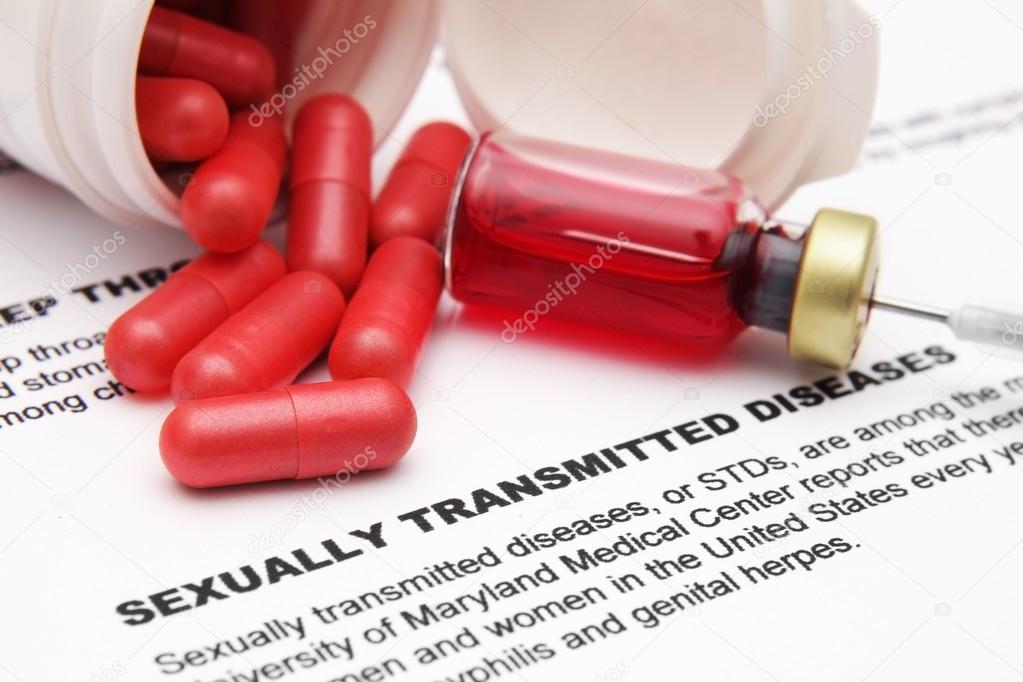 D., a board certified OB/GYN and professor at the Texas A&M College of Medicine. “Many women think itching and burning in the vaginal area only signals a yeast infection, but this is not true. These symptoms are indicative of a variety of conditions, including genital herpes.”
D., a board certified OB/GYN and professor at the Texas A&M College of Medicine. “Many women think itching and burning in the vaginal area only signals a yeast infection, but this is not true. These symptoms are indicative of a variety of conditions, including genital herpes.”
Sulak added irritation of the genital area can also manifest as yeast infection symptoms. “You could have itching and redness from shaving, or from chemical irritation. There really is no reason to use scented bath products or put perfumes and powders in the genital area,” she said. “All of these things will cause undesirable and unwanted symptoms in your sensitive nether region.”
So, how’s a girl to know the difference between a yeast infection or something else? The most common symptoms of a vaginal yeast infection include:
- Burning, redness, itching and swelling of the vagina and vulva
- Thick, white vaginal discharge similar to cottage cheese that does not have an odor
- Pain during intercourse or urination
Luckily, there’s a pretty quick solution for women who suffer from first-time yeast infections and exacerbated yeast infections that don’t respond to topical treatment.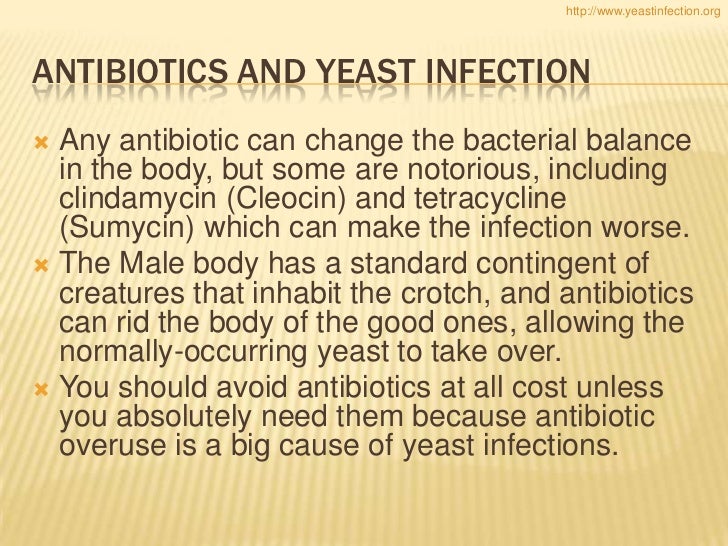 “The good news about yeast infections is that they are always treatable,” Sulak said. “For women who get chronic yeast infections, oral prescription medications are extremely effective. Studies have shown patients who took prescription yeast infection tablets once a week for several months treated the condition faster. When you need long-term maintenance therapy for yeast infections, this tablet is the only answer. Over-the-counter medications won’t provide the same result.”
“The good news about yeast infections is that they are always treatable,” Sulak said. “For women who get chronic yeast infections, oral prescription medications are extremely effective. Studies have shown patients who took prescription yeast infection tablets once a week for several months treated the condition faster. When you need long-term maintenance therapy for yeast infections, this tablet is the only answer. Over-the-counter medications won’t provide the same result.”
While there are many options available OTC to treat yeast infections, Sulak cautioned against using them for a first-time vaginal infection. “Any woman who experiences discomfort and abnormal symptoms in the vaginal area should always consult her health care provider,” she said. “Again, this is imperative because yeast infection symptoms are extremely similar to symptoms of sexually transmitted diseases.”
You can buy non-prescription yeast infection medications at your local pharmacy in the form of anti-fungal creams, tablets, ointments or suppositories you insert into the vagina. Application methods and length of treatment will depend on the brand you choose. If you suffer from recurring yeast infections a few times a year, it’s probably OK to use these over-the-counter medications as treatment — but you should still talk to your health care provider just to be safe.
Application methods and length of treatment will depend on the brand you choose. If you suffer from recurring yeast infections a few times a year, it’s probably OK to use these over-the-counter medications as treatment — but you should still talk to your health care provider just to be safe.
“You should always check these products to ensure they are actually an anti-fungal and will successfully treat and resolve the infection,” Sulak said. “Millions of dollars are spent every year on OTC products that have no anti-yeast medication and claim they treat yeast infections. Instead, some of these medications only contain a local antiesthetic to alleviate certain symptoms like burning.”
The good news is when a yeast infection flares up, you’re not at risk for any other health conditions. “The worst thing that can happen when you don’t immediately treat a yeast infection is it develops into a really bad yeast infection,” Sulak said. “When the yeast becomes embedded in the skin, it can cause redness and inflammation in the entire genital area. These infections may take weeks to completely treat.”
These infections may take weeks to completely treat.”
Important to note, if symptoms continue despite the use of OTC anti-fungal products, it’s time to make an appointment with your physician. “If you use over-the-counter medication and your symptoms abate, that’s great,” Sulak said. “But, if they keep recurring, you need to get checked out. The bottom line is, if your symptoms don’t go away, you need to be seen.”
Story Source:
Materials provided by Texas A&M University. Original written by Lauren Thompson. Note: Content may be edited for style and length.
Vaginitis | Johns Hopkins Medicine
What is vaginitis?
Vaginitis refers to any inflammation of the vagina. Inflammation may be infectious or noninfectious. It’s common in women of all ages. One-third of women have at least one form of vaginitis at some time during their lives.
When the walls of the vagina become inflamed, because some irritant has disturbed the balance of the vaginal area, vaginitis can occur.
What causes vaginitis?
Bacteria, yeast, viruses, chemicals in creams or sprays, and even clothing can cause vaginitis. Sometimes, it occurs from organisms that are passed between sexual partners. Also, a number of different factors can affect the health of your vagina. These include your overall health, your personal hygiene, medicines, hormones (particularly estrogen), and the health of your sexual partner. Changes in any of these factors can trigger vaginitis.
These are the most common types of vaginitis:
Your health care provider will consider other causes of vaginal discharge such as gonorrhea and chlamydia. These organisms don’t infect the vagina directly. If left untreated, they can lead to serious conditions, such as pelvic inflammatory disease (PID). PID increases a woman’s risk of infertility, pelvic scarring, chronic pelvic pain, and ectopic pregnancy. Chlamydia is one of the most common sexually transmitted diseases in the U.S., although it often goes undiagnosed.
What is candida or “yeast” infections?
Yeast infections, as they are commonly called, are caused by one of the many species of fungus known as candida. It normally lives in the vagina in small numbers. Candida can also be present in the mouth and digestive tract in both men and women.
Yeast is normally present and well-balanced in the vagina. Infection occurs when something upsets this normal balance. For example, taking an antibiotic to treat another infection may upset this balance. In this case, the antibiotic kills the bacteria that normally protects and balances the yeast in the vagina. In turn, the yeast overgrows, causing an infection. Other factors that can cause imbalance include a weak immune system, pregnancy, and diabetes.
What are the symptoms of a yeast infection?
The following are the most common symptoms of a candida infection:
A thick, white, cottage cheese-like vaginal discharge that is watery and usually odorless
Itching and redness of the vulva and vagina
Pain with urination or sex
The symptoms of a vaginal candida infection may look like other conditions or medical problems. Always consult your health care provider for a diagnosis.
Always consult your health care provider for a diagnosis.
Who is at risk for yeast infections?
Any woman can get a yeast infection. A woman may be at an increased risk if she:
Has had a recent course of antibiotics
Is pregnant
Has diabetes that is not well-controlled
Has HIV
Is taking an immunosuppressant medicine
Is using high-estrogen contraceptives
Is undergoing corticosteroid therapy, which weakens the immune system
How is a yeast infection diagnosed?
Your health care provider will review your medical history and do a physical and pelvic exam. He or she may also examine the vaginal discharge with a microscope.
Treatment for yeast infection
Treatment for candida may include:
What is bacterial vaginosis?
Bacterial vaginosis is the most common cause of vaginal discharge in women of reproductive age.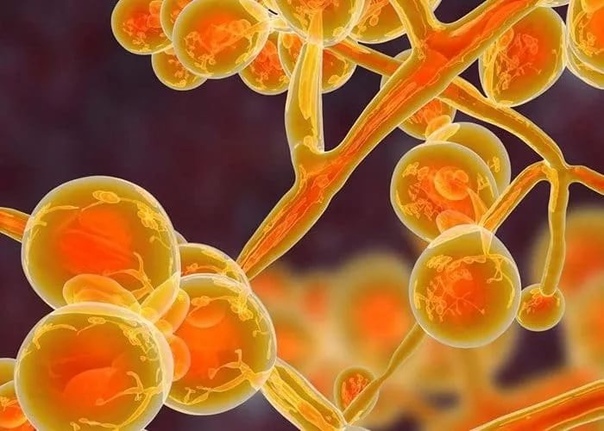 This is caused by an imbalance of bacteria. With bacterial vaginosis, there is a change in the type of bacteria that grows in the vagina.
This is caused by an imbalance of bacteria. With bacterial vaginosis, there is a change in the type of bacteria that grows in the vagina.
What are the symptoms of bacterial vaginosis?
These are the most common symptoms for bacterial vaginosis:
The symptoms of bacterial vaginosis may look like other conditions. Always consult your health care provider for a diagnosis.
Treatment for bacterial vaginosis
Bacterial vaginosis is caused by bacteria; therefore, it is generally treated with antibiotics.
What is trichomoniasis?
Trichomoniasis, trichomonas, or “trich” as it is commonly called, is a sexually transmitted infection. It is caused by a one-celled parasite called Trichomonas vaginalis that passes between partners during sex. Since most men do not get symptoms with trichomoniasis, the infection is often not diagnosed until the woman develops symptoms of vaginitis.
What are the symptoms of trichomoniasis?
The following are the most common symptoms of trichomoniasis:
A frothy, often musty-smelling, greenish-yellow discharge
Itching or burning in and around the vagina and vulva
Swelling or redness at the opening of the vagina
Light bleeding, especially after sex
Burning during urination
Discomfort in the lower abdomen
Pain during sex
Some women with trichomoniasis have no symptoms. The symptoms of trichomoniasis may look like other conditions or medical problems. Always consult your health care provider for a diagnosis.
The symptoms of trichomoniasis may look like other conditions or medical problems. Always consult your health care provider for a diagnosis.
Treatment for trichomoniasis
Both partners must be treated for trichomoniasis to avoid reinfection. Treatment generally involves taking oral antibiotics. If a woman has more than one sexual partner, each partner (and any of their other partners) should also be treated.
What is viral vaginitis?
Viruses are a common cause of vaginitis, with most being spread through sexual contact. One type of virus that causes viral vaginitis is the herpes simplex virus (HSV, or simply herpes). The main symptom is pain in the genital area associated with lesions and sores. These sores are generally visible on the vulva, or vagina, but may be found inside the vagina during a pelvic exam. Often stress or emotional situations can be a factor in triggering an outbreak of herpes.
Another source of viral vaginitis is the human papillomavirus (HPV), a virus that is also transmitted through sexual contact. HPV is the main cause of cervical cancer in women. This virus also causes painful warts to grow on the vagina, rectum, vulva, or groin. However, visible warts are not always present, in which case, the virus is generally detected by a test for HPV done with a Pap test.
HPV is the main cause of cervical cancer in women. This virus also causes painful warts to grow on the vagina, rectum, vulva, or groin. However, visible warts are not always present, in which case, the virus is generally detected by a test for HPV done with a Pap test.
HPV vaccines are effective in preventing infection by the particular strains of HPV that cause most cervical cancers. New vacciness may be effective against genital warts as well as some cancers of the vulva, vagina, and anus.
What is noninfectious vaginitis?
Noninfectious vaginitis usually refers to vaginal irritation without an infection being present. Most often, this is caused by an allergic reaction to, or irritation from, vaginal sprays, douches, or spermicidal products. It may be also be caused by sensitivity to perfumed soaps, detergents, or fabric softeners.
Another form of noninfectious vaginitis, called atrophic vaginitis, usually results from a decrease in hormones because of menopause, surgical removal of the ovaries, radiation therapy, or even after childbirth–particularly in breastfeeding women. Lack of estrogen dries and thins the vaginal tissue, and may also cause spotting.
Lack of estrogen dries and thins the vaginal tissue, and may also cause spotting.
What are the symptoms of noninfectious vaginitis?
The following are the most common symptoms of noninfectious vaginitis:
The symptoms of noninfectious vaginitis may look like other conditions or medical problems. Always consult your health care provider for a diagnosis.
Treatment for noninfectious vaginitis
Treatment for noninfectious vaginitis depends greatly on the cause. If the cause is a reaction to an irritant, the irritant should be avoided.
Vaginal Yeast Infection: Should I Treat It Myself?
You may want to have a say in this decision, or you may simply want to follow your doctor’s recommendation. Either way, this information will help you understand what your choices are so that you can talk to your doctor about them.
Vaginal Yeast Infection: Should I Treat It Myself?
Get the facts
Your options
- Treat your yeast infection with over-the-counter medicine.

- See your doctor for treatment advice, or wait to see if the infection goes away on its own.
Key points to remember
- A mild vaginal yeast infection may go away without treatment. If you have mild symptoms, you may want to wait to see if that happens.
- If you’re not pregnant and you know that your symptoms are caused by a yeast infection, you can treat it yourself with an over-the-counter antifungal medicine.
- If you’re not sure that your symptoms are caused by a yeast infection, you may want to see your doctor instead of treating it yourself. You could have another problem, such as a bacterial vaginal infection or a sexually transmitted infection (STI), that needs different treatment.
- If you are pregnant, see your doctor before you treat your symptoms so you can make sure you have a yeast infection. If you do, it can be safely treated with a vaginal medicine.
- Condoms and diaphragms aren’t safe to use for birth control when you are using an antifungal cream or suppository.
 These medicines contain oil, which can weaken rubber.
These medicines contain oil, which can weaken rubber.
FAQs
Yeast is a fungus that normally lives in the vagina in small numbers. A vaginal yeast infection means that too many yeast cells are growing in the vagina.
A healthy vagina has many bacteria and a small number of yeast cells. The most common bacteria, Lactobacillus acidophilus, help keep other organisms—like the yeast—under control.
Some things can cause an imbalance between these organisms and can prompt yeast to grow. Taking antibiotics sometimes causes this imbalance. So can the high estrogen levels caused by pregnancy or hormone therapy. So can some health problems, such as diabetes.
Although a yeast infection can cause severe itching, pain, and soreness, it’s not likely to lead to serious health problems. But if you get a lot of yeast infections, you may have a medical problem that needs treatment with antifungal medicines.
A one-time vaginal yeast infection is usually treated with either:
- An antifungal cream or suppository inserted into the vagina.
 You repeat this treatment for several days.
You repeat this treatment for several days. - A prescription antifungal pill you take once.
Another treatment is vaginal boric acid capsules. This may help for a yeast infection that has not gone away with antifungal treatment.
Not treating. A vaginal yeast infection does not lead to major health problems. And you may find that a mild infection goes away on its own. But you may not be able to go without treatment if you have severe symptoms.
Treating. The biggest risk is treating the wrong problem and delaying diagnosis and treatment of the right one.
If you have been diagnosed with a yeast infection before, you likely know the symptoms and can treat it yourself with an over-the-counter medicine with little risk.
Other conditions have similar symptoms to yeast infections, though. If you aren’t sure that your symptoms are caused by a yeast infection and yet you treat it anyway, you might be delaying diagnosis and treatment of your true problem, such as a bacterial vaginal infection or a sexually transmitted infection (STI).
Treating a yeast infection with a vaginal cream or suppository poses no major risks. This medicine only affects the vaginal area and usually does not cause pain or tenderness.
If you are pregnant and think you have a yeast infection, see a doctor. Don’t treat it yourself.
Compare your options
Compare Option 1Self-treat your yeast infectionDon’t self-treat
Compare Option 2Self-treat your yeast infectionDon’t self-treat
What is usually involved? | ||
|---|---|---|
What are the benefits? | ||
What are the risks and side effects? |
Self-treat your yeast infection Self-treat your yeast infection
- You use over-the-counter antifungal medicines to treat the infection.

- Medicine is used as a cream or a suppository you insert in your vagina.
- Depending on the medicine, treatment can last 1 to 7 days.
- You avoid the time and cost of a doctor visit.
- Antifungal treatments cure yeast infections in 80 to 90 out of 100 women who have them.footnote 1
- If you aren’t sure that your symptoms are caused by a yeast infection, you might be delaying diagnosis and treatment of your true problem.
- Antifungal treatments don’t cure yeast infections in 10 to 20 out of 100 women who have them.footnote 1
- Condoms and diaphragms are not safe to use for birth control when you are using an antifungal cream or suppository.
- Side effects of vaginal medicines can include burning and soreness when high doses are used.
- These treatments may not work if you get yeast infections often.
Don’t self-treat Don’t self-treat
- If your symptoms are mild, you can wait to see if they go away on their own.

- You can see your doctor to confirm that you have a yeast infection. If you do, you can treat it with over-the-counter medicine or a pill that your doctor prescribes.
- If you see a doctor, you can know for sure that the problem you are treating is a yeast infection.
- If your problem is not a yeast infection, your doctor can prescribe the right treatment.
- For pregnant women, seeing a doctor is the safest choice.
- There are no real risks or side effects. But you may spend time and money on a doctor visit that you did not need. Or your infection may not get better on its own, so you’d still need to get treatment.
During my pregnancy, I developed terribly uncomfortable vaginal yeast symptoms that just about drove me crazy. I knew it was a yeast infection, but since I was pregnant, I just didn’t want to do anything I shouldn’t. So I went for a quick check, and my nurse midwife sent me right off to get some over-the-counter cream. She told me that even though I’d been right about my diagnosis, I’d done the right thing to see her first. Sometimes it isn’t what you think it is, and you never know what medicines are safe when you’re pregnant.
She told me that even though I’d been right about my diagnosis, I’d done the right thing to see her first. Sometimes it isn’t what you think it is, and you never know what medicines are safe when you’re pregnant.
I started getting a vaginal itch last week, which I’ve had diagnosed before as a yeast infection. Although I was going to get some medicine right away, my sister reminded me that sometimes they go away on their own. After a few days, it was better. If it comes back again, I’ll probably try a vaginal cream, but for now it seems okay.
After taking antibiotics, I got a raging vaginal yeast infection. Believe it or not, I’d never had one before, so I went to my doctor to find out what was causing me such misery. She told me to use an over-the-counter vaginal medicine for 3 days since the strong 1-day kind might irritate my already inflamed skin. What a relief that brought me!
I swim year-round, so I have had some experience with yeast infections. So, when I get symptoms, I go right out and get the medicine. It’s worked every time.
It’s worked every time.
What matters most to you?
Your personal feelings are just as important as the medical facts. Think about what matters most to you in this decision, and show how you feel about the following statements.
Reasons to treat a vaginal yeast infection yourself
Reasons not to treat a yeast infection yourself
I’m sure I have a yeast infection.
I’m not sure I have a yeast infection.
More important
Equally important
More important
I don’t want to pay for a doctor visit.
I don’t mind paying for a doctor visit.
More important
Equally important
More important
I’m not worried about the side effects of antifungal medicines.
I’m worried about the side effects of antifungal medicines.
More important
Equally important
More important
I know I’m not pregnant.
I think I might be pregnant.
More important
Equally important
More important
My other important reasons:
My other important reasons:
More important
Equally important
More important
Where are you leaning now?
Now that you’ve thought about the facts and your feelings, you may have a general idea of where you stand on this decision. Show which way you are leaning right now.
Show which way you are leaning right now.
Treating my yeast infection myself
NOT treating my yeast infection myself
Leaning toward
Undecided
Leaning toward
What else do you need to make your decision?
1.1, Is it okay to treat your yeast infection yourself if you are pregnant? 2.2, Is it okay to treat a yeast infection yourself if you know you have one (and you are not pregnant)? 3.3, Is it a good idea to see your doctor if you’re not sure your symptoms are caused by a yeast infection? 1.1,Do you understand the options available to you?2.2,Are you clear about which benefits and side effects matter most to you?3.3,Do you have enough support and advice from others to make a choice?
1.
How sure do you feel right now about your decision?
Not sure at all
Somewhat sure
Very sure
2.2, Check what you need to do before you make this decision.
Use the following space to list questions, concerns, and next steps.
Your Summary
Here’s a record of your answers. You can use it to talk with your doctor or loved ones about your decision.
Next steps
Which way you’re leaning
How sure you are
Your comments
Key concepts that you understood
Key concepts that may need review
Credits
| Author | Healthwise Staff |
|---|---|
| Primary Medical Reviewer | Kathleen Romito MD – Family Medicine |
| Primary Medical Reviewer | Martin J.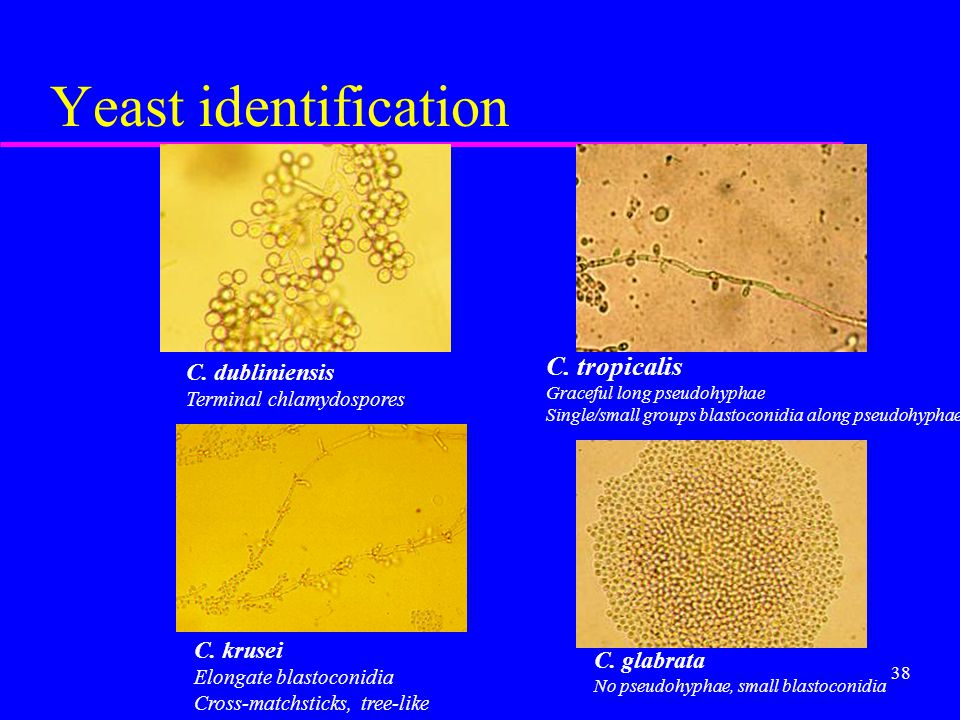 Gabica MD – Family Medicine Gabica MD – Family Medicine |
| Primary Medical Reviewer | Adam Husney MD – Family Medicine |
| Primary Medical Reviewer | Kirtly Jones MD – Obstetrics and Gynecology |
References
Citations
- Centers for Disease Control and Prevention (2015). Sexually transmitted diseases treatment guidelines, 2015. MMWR, 64(RR-03): 1–137. http://www.cdc.gov/std/tg2015. Accessed July 2, 2015. [Erratum in MMWR, 64(33): 924. http://www.cdc.gov/mmwr/preview/mmwrhtml/mm6433a9.htm?s_cid=mm6433a9_w. Accessed January 25, 2016.]
You may want to have a say in this decision, or you may simply want to follow your doctor’s recommendation. Either way, this information will help you understand what your choices are so that you can talk to your doctor about them.
Vaginal Yeast Infection: Should I Treat It Myself?
Here’s a record of your answers.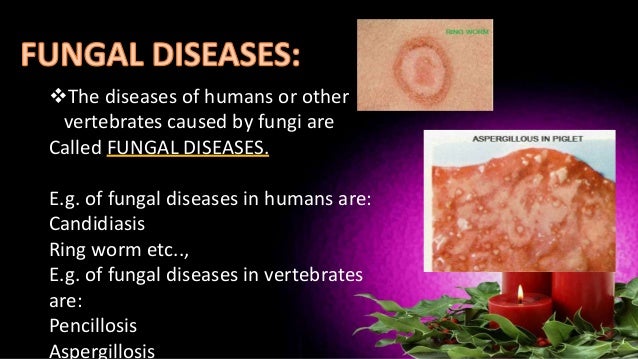 You can use it to talk with your doctor or loved ones about your decision.
You can use it to talk with your doctor or loved ones about your decision.
- Get the facts
- Compare your options
- What matters most to you?
- Where are you leaning now?
- What else do you need to make your decision?
1. Get the Facts
Your options
- Treat your yeast infection with over-the-counter medicine.
- See your doctor for treatment advice, or wait to see if the infection goes away on its own.
Key points to remember
- A mild vaginal yeast infection may go away without treatment. If you have mild symptoms, you may want to wait to see if that happens.
- If you’re not pregnant and you know that your symptoms are caused by a yeast infection, you can treat it yourself with an over-the-counter antifungal medicine.
- If you’re not sure that your symptoms are caused by a yeast infection, you may want to see your doctor instead of treating it yourself.
 You could have another problem, such as a bacterial vaginal infection or a sexually transmitted infection (STI), that needs different treatment.
You could have another problem, such as a bacterial vaginal infection or a sexually transmitted infection (STI), that needs different treatment. - If you are pregnant, see your doctor before you treat your symptoms so you can make sure you have a yeast infection. If you do, it can be safely treated with a vaginal medicine.
- Condoms and diaphragms aren’t safe to use for birth control when you are using an antifungal cream or suppository. These medicines contain oil, which can weaken rubber.
FAQs
What is a vaginal yeast infection?
Yeast is a fungus that normally lives in the vagina in small numbers. A vaginal yeast infection means that too many yeast cells are growing in the vagina.
A healthy vagina has many bacteria and a small number of yeast cells. The most common bacteria, Lactobacillus acidophilus, help keep other organisms—like the yeast—under control.
Some things can cause an imbalance between these organisms and can prompt yeast to grow.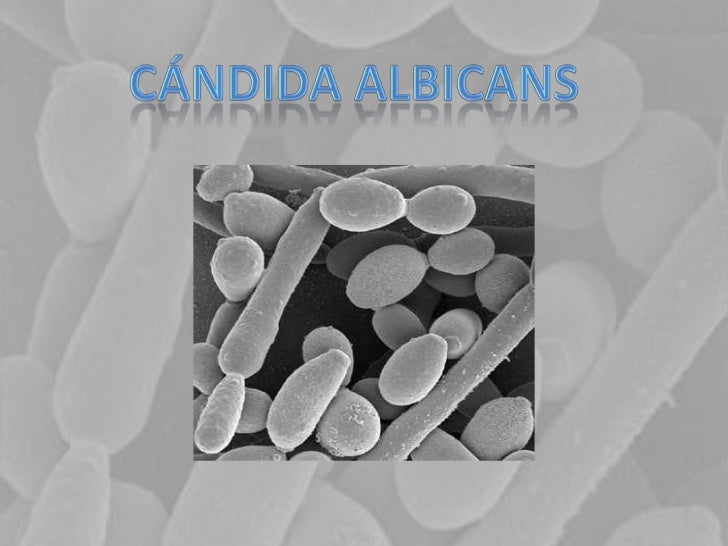 Taking antibiotics sometimes causes this imbalance. So can the high estrogen levels caused by pregnancy or hormone therapy. So can some health problems, such as diabetes.
Taking antibiotics sometimes causes this imbalance. So can the high estrogen levels caused by pregnancy or hormone therapy. So can some health problems, such as diabetes.
Although a yeast infection can cause severe itching, pain, and soreness, it’s not likely to lead to serious health problems. But if you get a lot of yeast infections, you may have a medical problem that needs treatment with antifungal medicines.
How is a yeast infection treated?
A one-time vaginal yeast infection is usually treated with either:
- An antifungal cream or suppository inserted into the vagina. You repeat this treatment for several days.
- A prescription antifungal pill you take once.
Another treatment is vaginal boric acid capsules. This may help for a yeast infection that has not gone away with antifungal treatment.
What are the risks of not treating or treating a vaginal yeast infection?
Not treating. A vaginal yeast infection does not lead to major health problems. And you may find that a mild infection goes away on its own. But you may not be able to go without treatment if you have severe symptoms.
And you may find that a mild infection goes away on its own. But you may not be able to go without treatment if you have severe symptoms.
Treating. The biggest risk is treating the wrong problem and delaying diagnosis and treatment of the right one.
If you have been diagnosed with a yeast infection before, you likely know the symptoms and can treat it yourself with an over-the-counter medicine with little risk.
Other conditions have similar symptoms to yeast infections, though. If you aren’t sure that your symptoms are caused by a yeast infection and yet you treat it anyway, you might be delaying diagnosis and treatment of your true problem, such as a bacterial vaginal infection or a sexually transmitted infection (STI).
Treating a yeast infection with a vaginal cream or suppository poses no major risks. This medicine only affects the vaginal area and usually does not cause pain or tenderness.
If you are pregnant and think you have a yeast infection, see a doctor. Don’t treat it yourself.
Don’t treat it yourself.
2. Compare your options
| Self-treat your yeast infection | Don’t self-treat | |
|---|---|---|
| What is usually involved? |
|
|
| What are the benefits? |
|
|
| What are the risks and side effects? |
|
|
Personal stories
Personal stories about self-treating a possible vaginal yeast infection
These stories are based on information gathered from health professionals and consumers. They may be helpful as you make important health decisions.
“During my pregnancy, I developed terribly uncomfortable vaginal yeast symptoms that just about drove me crazy. I knew it was a yeast infection, but since I was pregnant, I just didn’t want to do anything I shouldn’t. So I went for a quick check, and my nurse midwife sent me right off to get some over-the-counter cream. She told me that even though I’d been right about my diagnosis, I’d done the right thing to see her first. Sometimes it isn’t what you think it is, and you never know what medicines are safe when you’re pregnant.”
“I started getting a vaginal itch last week, which I’ve had diagnosed before as a yeast infection. Although I was going to get some medicine right away, my sister reminded me that sometimes they go away on their own. After a few days, it was better. If it comes back again, I’ll probably try a vaginal cream, but for now it seems okay.”
After a few days, it was better. If it comes back again, I’ll probably try a vaginal cream, but for now it seems okay.”
“After taking antibiotics, I got a raging vaginal yeast infection. Believe it or not, I’d never had one before, so I went to my doctor to find out what was causing me such misery. She told me to use an over-the-counter vaginal medicine for 3 days since the strong 1-day kind might irritate my already inflamed skin. What a relief that brought me!”
“I swim year-round, so I have had some experience with yeast infections. So, when I get symptoms, I go right out and get the medicine. It’s worked every time.”
3. What matters most to you?
Your personal feelings are just as important as the medical facts. Think about what matters most to you in this decision, and show how you feel about the following statements.
Reasons to treat a vaginal yeast infection yourself
Reasons not to treat a yeast infection yourself
I’m sure I have a yeast infection.
I’m not sure I have a yeast infection.
More important
Equally important
More important
I don’t want to pay for a doctor visit.
I don’t mind paying for a doctor visit.
More important
Equally important
More important
I’m not worried about the side effects of antifungal medicines.
I’m worried about the side effects of antifungal medicines.
More important
Equally important
More important
I know I’m not pregnant.
I think I might be pregnant.
More important
Equally important
More important
My other important reasons:
My other important reasons:
More important
Equally important
More important
4. Where are you leaning now?
Now that you’ve thought about the facts and your feelings, you may have a general idea of where you stand on this decision. Show which way you are leaning right now.
Treating my yeast infection myself
NOT treating my yeast infection myself
Leaning toward
Undecided
Leaning toward
5.
 What else do you need to make your decision?
What else do you need to make your decision?
Check the facts
1.
Is it okay to treat your yeast infection yourself if you are pregnant?
You’re right. If you’re pregnant, see your doctor before you treat your symptoms so you can make sure you have a yeast infection.
2.
Is it okay to treat a yeast infection yourself if you know you have one (and you are not pregnant)?
You’re right. If you’re not pregnant and you know that your symptoms are caused by a yeast infection, you can treat it yourself with an over-the-counter antifungal medicine.
3.
Is it a good idea to see your doctor if you’re not sure your symptoms are caused by a yeast infection?
You’re right. If you’re not sure that your symptoms are caused by a yeast infection, you may want to see your doctor instead of treating it yourself. You could have another problem that needs different treatment.
Decide what’s next
1.
Do you understand the options available to you?
2.
Are you clear about which benefits and side effects matter most to you?
3.
Do you have enough support and advice from others to make a choice?
Certainty
1.
How sure do you feel right now about your decision?
Not sure at all
Somewhat sure
Very sure
2.
Check what you need to do before you make this decision.
Use the following space to list questions, concerns, and next steps.
Credits
| By | Healthwise Staff |
|---|---|
| Primary Medical Reviewer | Kathleen Romito MD – Family Medicine |
| Primary Medical Reviewer | Martin J. Gabica MD – Family Medicine |
| Primary Medical Reviewer | Adam Husney MD – Family Medicine |
| Primary Medical Reviewer | Kirtly Jones MD – Obstetrics and Gynecology |
References
Citations
- Centers for Disease Control and Prevention (2015).
 Sexually transmitted diseases treatment guidelines, 2015. MMWR, 64(RR-03): 1–137. http://www.cdc.gov/std/tg2015. Accessed July 2, 2015. [Erratum in MMWR, 64(33): 924. http://www.cdc.gov/mmwr/preview/mmwrhtml/mm6433a9.htm?s_cid=mm6433a9_w. Accessed January 25, 2016.]
Sexually transmitted diseases treatment guidelines, 2015. MMWR, 64(RR-03): 1–137. http://www.cdc.gov/std/tg2015. Accessed July 2, 2015. [Erratum in MMWR, 64(33): 924. http://www.cdc.gov/mmwr/preview/mmwrhtml/mm6433a9.htm?s_cid=mm6433a9_w. Accessed January 25, 2016.]
Note: The “printer friendly” document will not contain all the information available in the online document some Information (e.g. cross-references to other topics, definitions or medical illustrations) is only available in the online version.
Current as of: July 17, 2020
Author:
Healthwise Staff
Medical Review:Kathleen Romito MD – Family Medicine & Martin J. Gabica MD – Family Medicine & Adam Husney MD – Family Medicine & Kirtly Jones MD – Obstetrics and Gynecology
Centers for Disease Control and Prevention (2015). Sexually transmitted diseases treatment guidelines, 2015. MMWR, 64(RR-03): 1-137.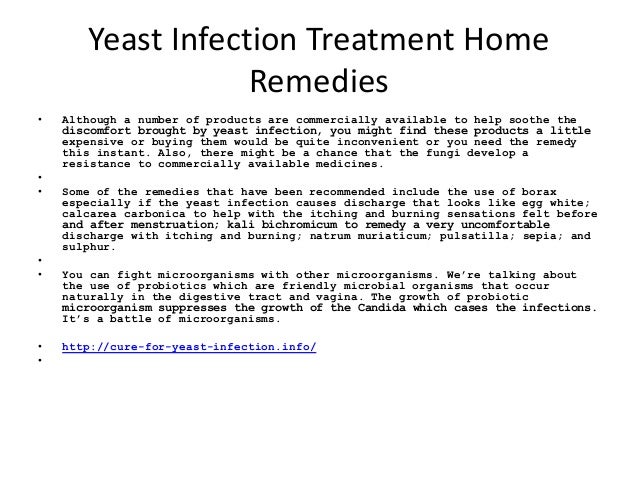 http://www.cdc.gov/std/tg2015. Accessed July 2, 2015. [Erratum in MMWR, 64(33): 924. http://www.cdc.gov/mmwr/preview/mmwrhtml/mm6433a9.htm?s_cid=mm6433a9_w. Accessed January 25, 2016.]
http://www.cdc.gov/std/tg2015. Accessed July 2, 2015. [Erratum in MMWR, 64(33): 924. http://www.cdc.gov/mmwr/preview/mmwrhtml/mm6433a9.htm?s_cid=mm6433a9_w. Accessed January 25, 2016.]
Sex with a yeast infection: Is it safe?
Yeast infections occur because of an overgrowth of a type of fungus known as Candida, which lives in the body harmlessly most of the time. It is possible to have sex with a yeast infection, but it can be painful and has other risks.
According to the Centers for Disease Control and Prevention (CDC), vaginal yeast infections are the second most common kind of vaginal infections after bacterial infections of the vagina.
Symptoms of a vaginal yeast infection can include:
- vaginal pain or soreness
- pain during urination
- itching or burning
- pain during sex
- thick, white vaginal discharge
While it is possible for a person with a yeast infection to have sex, most doctors do not recommend having sex until the infection has cleared up.
Also, because many of the symptoms are uncomfortable, individuals may choose to refrain from sexual activity while they have a yeast infection to minimize pain and itching.
As well as being painful or uncomfortable, a person who has sex while they have a yeast infection may cause the infection to last longer, cause symptoms to return if they have recently cleared up following treatment, and increase their partner’s risk of developing a yeast infection as well.
Sexual partners can transmit yeast infections. However, the likelihood of transmission is small.
When a woman has sex with another woman, there is some evidence to suggest they can transmit a yeast infection. However, one study found no evidence supporting the transmission of the infection from woman to woman through sex.
While yeast infections in men are rare, it is possible for a man to get an infection by having sex with a person who has a vaginal yeast infection. Uncircumcised men are more susceptible to developing a yeast infection.
A yeast infection is not a sexually transmitted infection (STI). However, some prevention methods, such as condoms, can help reduce the risk of spreading a yeast infection to a partner.
Having sex while undergoing treatment for a yeast infection may slow down the healing process.
Also, if a person’s partner develops a yeast infection, it is possible that the infection will get passed back and forth. A person should generally avoid sexual activity until all the symptoms clear up.
Yeast infections usually clear relatively rapidly once a person begins treatment. Many over-the-counter (OTC) treatment options require up to 7 days to clear up the infection.
The fungus Candida causes yeast infections. This fungus lives in and on various parts of the human body, including the skin, the mouth, and the vagina.
In the vagina, the Lactobacillus bacteria typically keeps Candida numbers in check.
If there is a shortage or imbalance of Lactobacillus compared to Candida, a yeast infection may occur.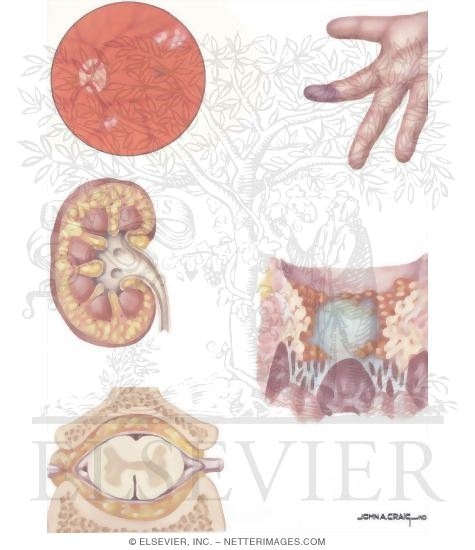
Some common causes of a bacterial imbalance in the vagina include:
Most yeast infections are easy to treat. However, if a person experiences multiple, recurring yeast infections, they should speak to a doctor as Candida may not be the underlying cause or OTC remedies may be ineffective.
Symptoms of a yeast infection include:
- pain during sex
- burning sensation during sex or urination
- itchiness
- redness
- a rash
- swelling of the labia
- white, clumpy discharge
When left untreated, the symptoms will typically get worse. However, some mild yeast infections may get better without treatment.
People can often treat a yeast infection at home using OTC remedies. These treatments usually contain one of the following ingredients:
- butoconazole (Gynazole)
- miconazole (Monistat)
- terconazole (Terazol)
When a person develops a yeast infection for the first time, they should see a doctor to ensure they receive the correct diagnosis and treatment.
People should also seek medical advice if OTC treatments are not effective. A doctor may recommend alternative treatments, including oral medication.
Finally, a person should seek medical attention if they:
- have four or more yeast infections in a year
- are pregnant
- have severe symptoms
- have a compromised immune system
Once the treatment is complete, and the symptoms are gone, a person can return to their regular sex life.
NORD (National Organization for Rare Disorders)
Since Candida Albicans is supposed to be present in healthy people, treatment is very rarely needed. The American Academy of Allergy and Immunology has stated that the concept of yeast allergy or Candidiasis hypersensitivity is speculative and unproven. Health foods and vitamins are not effective treatments.
If the patient is taking a broad spectrum antibiotic, it is helpful to stop treatment so that the usual bacterial flora of the mucous membranes is restored.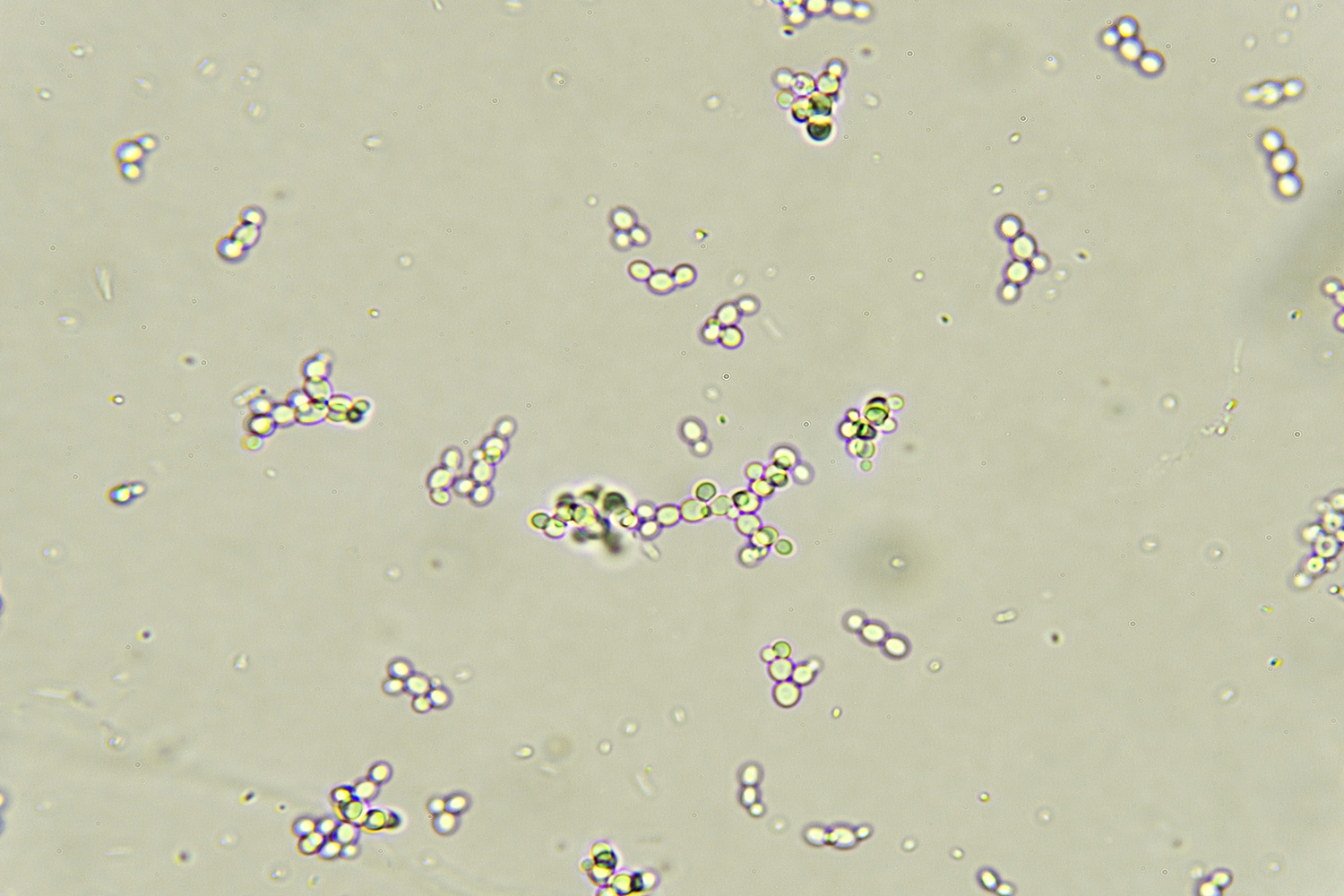 If possible, treatment with corticosteroids and immunosuppressive drugs should also be stopped. Patients who are particularly prone to Candidiasis infections (e.g., diabetics) should particularly try to avoid taking the types of drugs that encourage growth of fungus.
If possible, treatment with corticosteroids and immunosuppressive drugs should also be stopped. Patients who are particularly prone to Candidiasis infections (e.g., diabetics) should particularly try to avoid taking the types of drugs that encourage growth of fungus.
Treatment of Skin or Vaginal Candidiasis with local applications of nystatin, clotrimazole, or miconazole may be effective in many cases. To treat inflammation and itching simultaneously, antifungal and corticosteroid creams may be used together.
To prevent and treat Candidiasis of the mouth, good oral hygiene is imperative, especially by denture wearers. To treat acute pulpar alveolar cellulitis (an infection of the connective tissue lining the root canal), removal of decayed and foreign matter from the mucous surfaces, rinsing with warm salt water or baking soda solution can be helpful. Medications applied through the root canal have also proven to be effective in some cases.
Vaginal Candidiasis – Treatment of the vaginal discharge and itching in this type of infection consists of administering specific antifungal drugs. Proper hygiene habits and control of diabetes when applicable can help to avoid repeated infections in women who are particularly prone to this infection.
Proper hygiene habits and control of diabetes when applicable can help to avoid repeated infections in women who are particularly prone to this infection.
To prevent Candida infection of the Vagina or Penis from spreading when one sexual partner is infected, nystatin may be prescribed to both partners.
For candidal diaper rash, the skin should be kept dry by changing diapers frequently. Use of petroleum jelly and talcum powder should be avoided. In severe cases, plastic pants and plastic disposable diaper coverings should not be used. Certain creams and ointments may be prescribed by a physician.
For treatment of Chronic Mucocutaneous Candidiasis, amphotericin B, nystatin, clotrimazole, miconizole or 5-fluorocytosine are useful drugs. Antifungal and immune system-stimulating substances (such as the molecule that can transfer immunity from a sensitized to a non-sensitized individual) called transfer factor, thymosin, thymus epithelial cell transplantation, and levamisol, are also used in treatment.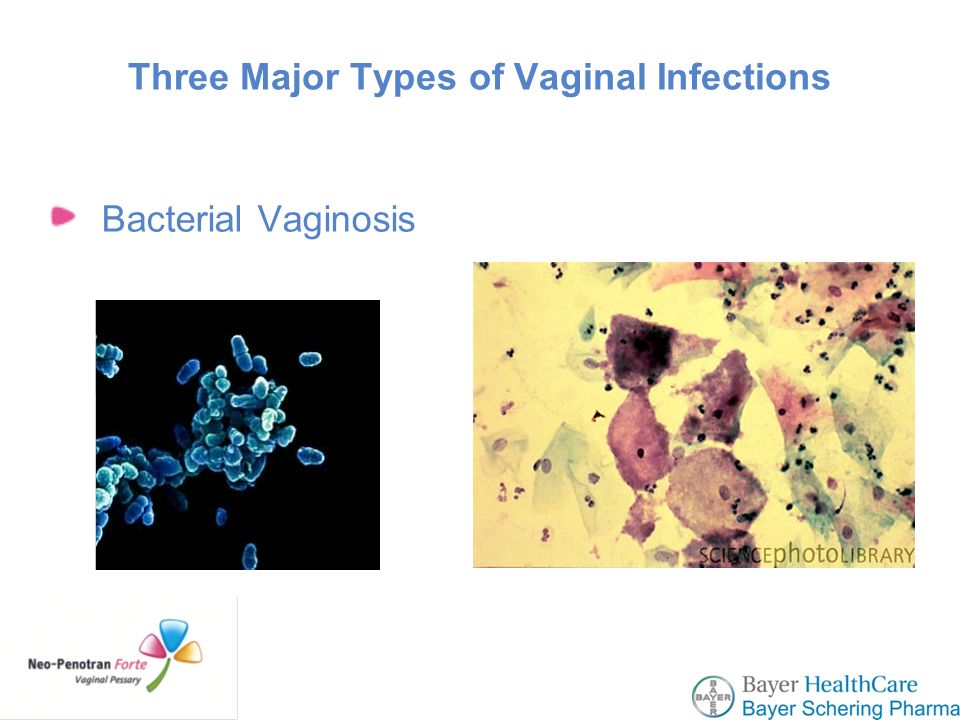 (For more information on these disorders, choose “immunodeficiency” as your search term in the Rare Disease Database.)
(For more information on these disorders, choose “immunodeficiency” as your search term in the Rare Disease Database.)
A new drug for the treatment of Candidiasis, Cryptococcal Meningitis, and other persons with weakened immune systems such as AIDS patients has recently been approved by the FDA. The drug diflucan (fluconazole) has been found effective against these types of infections in persons with weakened immune systems.
The drug amphotericin B lipid complex (Abelcet) has received an orphan drug designation for the treatment of Candidiasis. More studies are needed to determine the long-term safety and effectiveness of this drug for the treatment of Candidiasis. For more information, contact:
The Liposome Company, Inc.
One Research Way
Princeton. N. 08540
Symptoms, Prevention & Safe Treatment
With so much going on down there already, the last thing you need is an itchy yeast infection when you’re expecting. Unfortunately, soaring estrogen levels that come with having a bun in the oven can increase your risk of having one, making yeast infections the most common vaginal infection during pregnancy.
In fact, nearly 75 percent of all adult women have had at least one yeast infection in their lifetime, according to the Centers for Disease Control and Prevention (CDC). The good news: While uncomfortable for the mother-to-be, yeast infections don’t affect your pregnancy or your growing baby, and safe treatment options are available.
What causes yeast infections during pregnancy?
Vaginal yeast infections are caused by an overgrowth of a fungus called Candida. Although it lives in the vagina normally, an imbalance in bacteria and yeast can allow Candida to overgrow, leading to symptoms of a yeast infection.
Women are more likely to develop yeast infections at times when they are experiencing fluctuations in hormone levels, such as during pregnancy, while taking oral contraceptives or due to estrogen therapy. Taking certain types of antibiotics can also up your risk, as can having diabetes or a condition that weakens your immune system, such as HIV.
What are the symptoms of a yeast infection?
It’s normal to experience an increase in vaginal discharge during pregnancy. In fact, the thin, milky, mild-smelling discharge you may notice when you’re pregnant is so common it has a name: leukorrhea.
The discharge you notice when you have a yeast infection is different, however. If you have a yeast infection, you may experience:
- White, lumpy, odorless discharge
- Itching and burning of the area outside of your vagina (called the vulva)
- Your vulva may look red and swollen
- Painful urination
Some women also experience discomfort during intercourse when they have a yeast infection.
Yeast infections can look and feel like other conditions, including a variety of sexually transmitted diseases or bacterial vaginosis, so it’s important to talk to your doctor about your symptoms — even if you have had a yeast infection in the past and believe you may have developed one again.
How to prevent yeast infections during pregnancy
While you can’t control your hormones (wouldn’t that be nice!), you can take a few steps to prevent yeast infections during pregnancy. Some tactics to try:
- Excess moisture can exasperate an imbalance, making your vagina a more welcoming environment for fungal growth. Wear cotton undergarments that allow your genital area to “breathe.”
- Try sleeping without underwear or pajama bottoms at night to allow for increased air flow.
- Take showers instead of baths (especially bubble baths, since they can be irritating).
- Never douche or use vaginal sprays or deodorants.
- Avoid sitting around in a wet bathing suit.
- After showering or swimming, make sure your genital area is completely dry before putting on your underwear and clothes.
- Take antibiotics only when prescribed by your doctor and use them exactly as directed.

Adding yogurt containing live probiotic cultures might also help to keep symptoms at bay, and you can ask your doctor whether they recommend a probiotic supplement.
Some women with chronic yeast infections also find it helpful to cut back on foods that feed yeast, such as sugar and baked goods that are made with refined flour.
How to treat a yeast infection when you’re pregnant
Even if you’ve had yeast infections before and are a pro at self-diagnosing, it’s best to call your provider before using an over-the-counter medication. Why? Some women who think they have a yeast infection actually have a bacterial infection like bacterial vaginosis or trichomoniasis, and a yeast infection medication will only prolong the issue.
If you have a yeast infection, your doctor may recommend an over-the-counter or prescription antifungal cream or vaginal suppository. The following over-the-counter and prescription yeast infection treatments are generally considered safe during pregnancy, but be sure to check with your practitioner before starting treatment.
- Clotrimazole (Mycelex, Lotrimin AF)
- Miconazole (Monistat 3)
- Terconazole
Some prescription antifungals, such as fluconazole (Diflucan), may be prescribed if necessary, but some doctors recommend avoiding them, especially in the first trimester.
Keep in mind that these treatments may take several days before they bring relief, and that even when you do start to feel better, you should continue to use the medication for as long as your practitioner suggested — which may be a week or more.
Can a yeast infection during pregnancy affect your baby?
Fortunately, yeast infections aren’t dangerous (and they’re rarely more than an irritating inconvenience). But if you have a yeast infection when you go into labor, it is possible to pass it to your baby during delivery, since the fungus that causes vaginal yeast infections can also cause thrush, a type of yeast infection that typically appears in the gums, tongue, roof of the mouth and/or insides of the cheeks.
In this case, your newborn might develop white patches in the mouth, which can be passed back to you when you breastfeed. Luckily, thrush is easily treated with a mild antifungal medication for baby and an antifungal cream for you.
Recurrent Yeast Infections: Causes and How to Treat Them
If you deal with recurrent yeast infections, you’ve probably gotten your response down to an art. At the first sign of yet another yeast infection, you may hightail it to your local drugstore, cruise through that aisle, and search for a yeast infection treatment that will make your symptoms disappear ASAP. Then you enjoy what yeast-infection-free time you have left before another one inevitably hits.
But did you know that you don’t just have to accept a life of chronic yeast infections? Getting four or more yeast infections a year is actually a sign that you might benefit from a different kind of treatment, according to the Mayo Clinic. So before you just accept a lifetime of creams and suppositories, you should know that it doesn’t have to be like this. Keep reading to learn why you may be dealing with recurrent yeast infections, plus how to get some much-needed relief.
Keep reading to learn why you may be dealing with recurrent yeast infections, plus how to get some much-needed relief.
First, you need to understand what a yeast infection is.
A yeast infection typically happens when a fungus called Candida albicans overgrows in your vagina and causes severe itchiness and other annoying symptoms, according to the Mayo Clinic.
Before you get grossed out, remember that it’s totally natural to have some Candida albicans in your vagina! Lactobacillus bacteria produce acid to prevent an overgrowth of this yeast and generally help keep your vagina happy and healthy. It’s only when this yeast grows too much that you can begin to have an issue.
With that in mind, there’s also the possibility of “complicated” yeast infections for a variety of reasons. According to the Mayo Clinic, your yeast infection might be complicated if you have four or more yeast infections in a year (meaning you have recurrent yeast infections), if it’s caused by a different type of fungus (instead of Candida albicans), if you’re pregnant, if you have uncontrolled diabetes, or if your immune system is weakened by a condition such as HIV.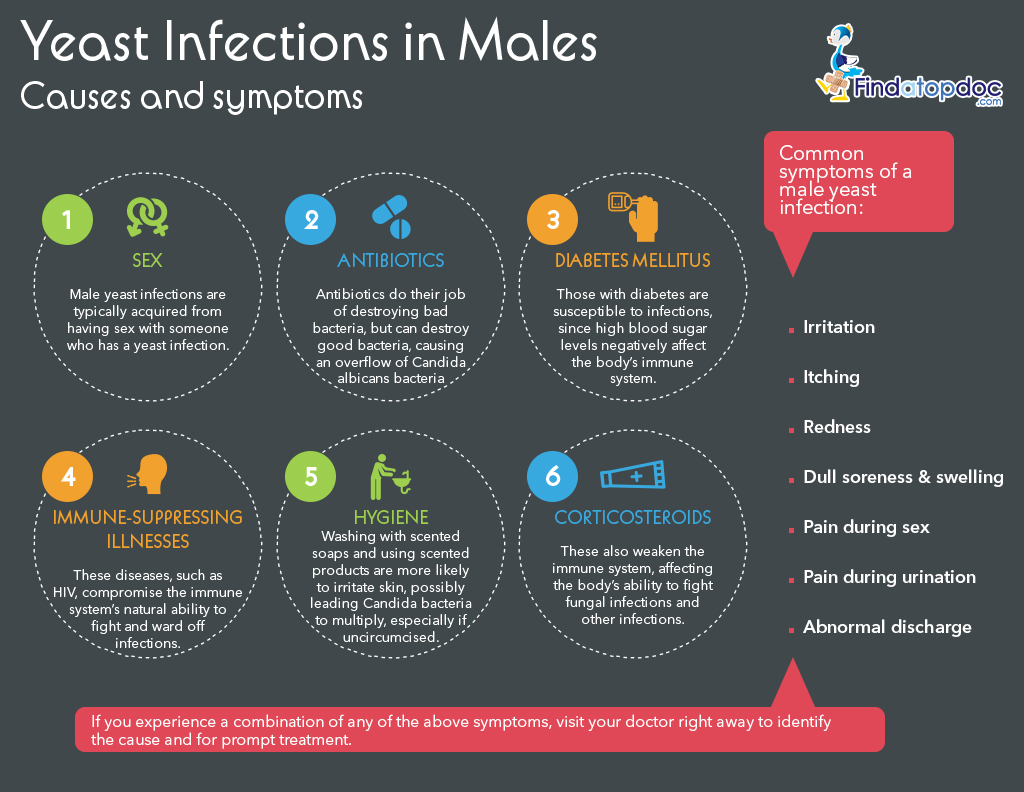
In case you need a refresher, these are the symptoms of a yeast infection.
According to the Mayo Clinic, yeast infection symptoms usually range from mild to moderate and include:
Itching and irritation in your vagina and around your vulva
Burning when you pee
Burning during sex
Redness and swelling of your vulva
Vaginal pain and soreness
Thick, white, odor-free vaginal discharge that looks like cottage cheese
Watery vaginal discharge
If you have a complicated yeast infection—potentially including chronic yeast infections—your symptoms might be more severe and include things like extensive redness, swelling, and itching that can lead to tears, cracks, or sores on your vulva.
What causes yeast infections?
If something disrupts the balance of your vagina’s pH, yeast can get out of control and cause an infection, Sherry A. Ross, M.D., a women’s health expert and author of She-ology: The Definitive Guide to Women’s Intimate Health. Period., tells SELF.
Period., tells SELF.
There are a few things that can disrupt that balance and cause a yeast infection, including:
Antibiotics: Antibiotic use is a huge one, since it can kill the healthy bacteria in your vagina that help to ward off infections, according to the Mayo Clinic.
Scented products: In some cases, a new soap or laundry detergent with fragrance can set you up for a yeast infection by disrupting your natural pH balance. For similar reasons, you should keep douches of all forms away from your vagina: Trying to “clean” inside of yourself can promote pH disruption and is seriously unnecessary.
Hanging around in damp clothes: Wearing sweaty workout clothes or a wet bathing suit for too long can also contribute to yeast infections. Yeast loves warm, moist environments, and your workout gear or a wet bathing suit can trap heat and sweat, allowing yeast to flourish, Christine Greves, M.D., a board-certified ob-gyn at the Winnie Palmer Hospital for Women and Babies, tells SELF.

High estrogen levels: Having elevated estrogen levels due to pregnancy, taking high-estrogen birth control pills, or using estrogen hormone therapy can increase your risk of yeast infections. Excess estrogen can promote higher levels of glycogen (a stored form of glucose, also known as sugar) in the vagina. Yeast loves sugar, Dr. Greves explains, which is extremely relatable and also why people with diabetes who have trouble controlling their blood sugar levels are often at a higher risk of getting yeast infections.
Having sex: Unfortunately, having sex can also promote yeast infections, although yeast infections aren’t considered a sexually transmitted infection, the Mayo Clinic notes.
A weak immune system: Having lowered immunity makes you more susceptible to getting yeast infections, according to the Mayo Clinic.
Here’s when you should see a doctor.
First, in general, you should see a doctor if this is your first time experiencing yeast infection symptoms, if you’re not sure you have a yeast infection, or if your symptoms aren’t going away with the typical over-the-counter antifungal vaginal creams or suppositories that have treated your yeast infections in the past, per the Mayo Clinic.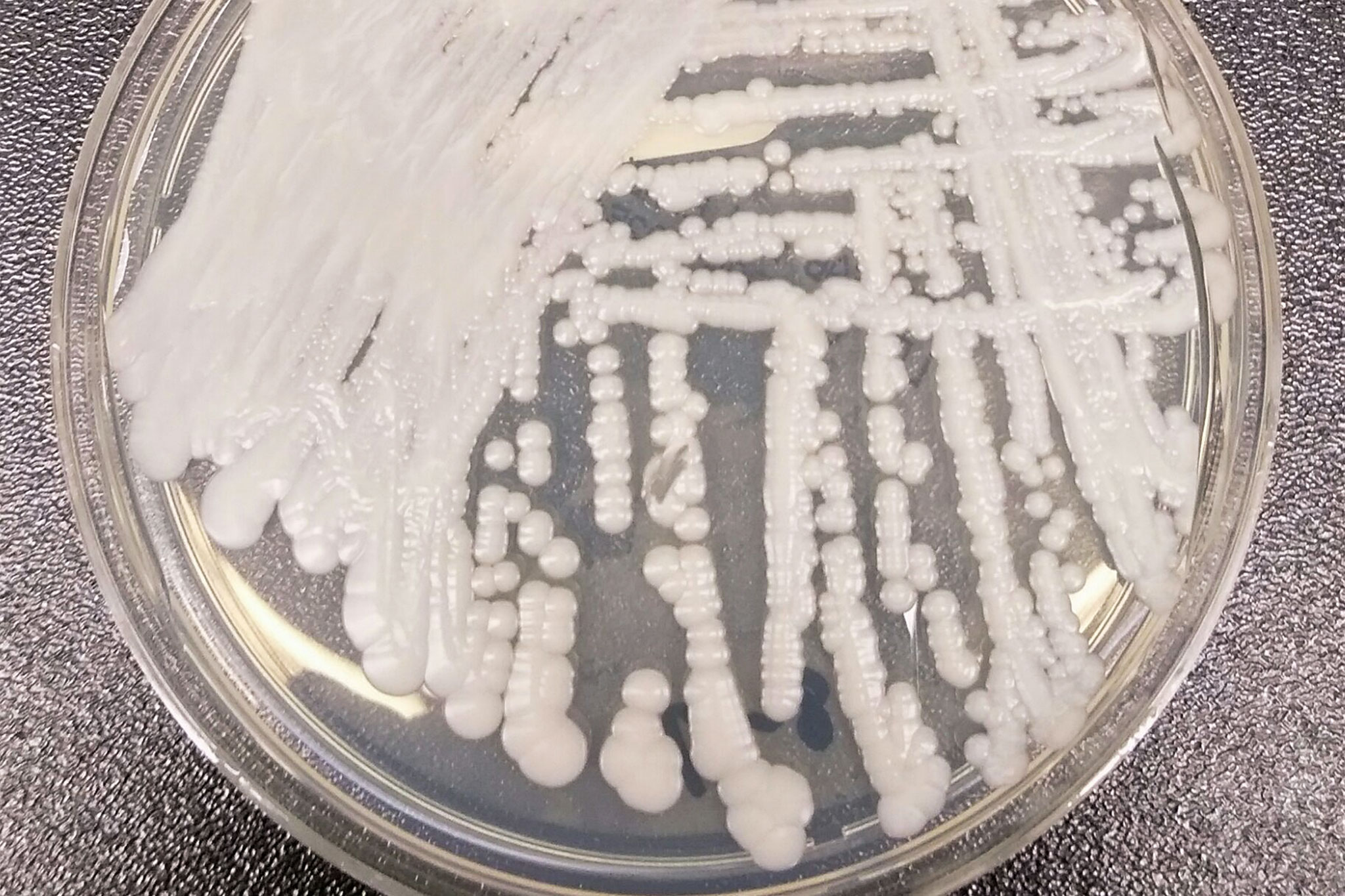
90,000 HOW INJECT YEAST CAN BECOME A SOURCE OF SERIOUS INFECTION
Candida auris is a yeast from the Saccharomycetes class, which also includes the well-known baker’s yeast. In addition to species that are intensively used by humans in the food industry and biotechnology, this class also includes many well-known pathogenic species, including those united by the generic name Candida (for example, Candida albicans and Candida glabrata).
The fungus in question was first described only in 2009 – it was found in the ear of a Japanese patient, and because of its location was named auris.After that, he was widely talked about in 2016, when outbreaks of hospital infections caused by yeast resistant to known drugs occurred in several countries at once.
In general, this behavior is not typical for yeast infections – they are usually relatively reluctant, in comparison with bacteria and viruses, to spread between patients, therefore they rarely lead to massive infections.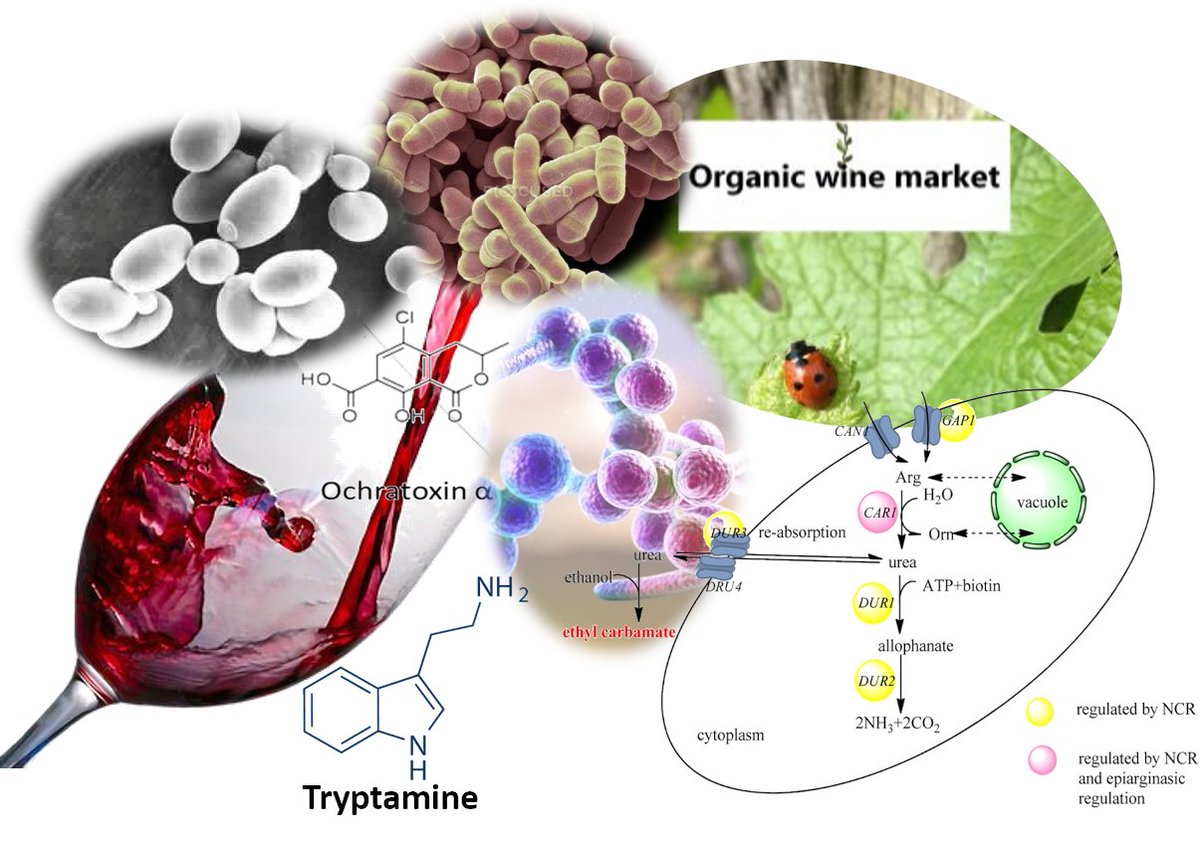 But “ear” yeast was not only resistant to drugs, but also quite “stubborn” – for example, on household surfaces, they survived for several weeks, and common disinfectants could not cope with them.
But “ear” yeast was not only resistant to drugs, but also quite “stubborn” – for example, on household surfaces, they survived for several weeks, and common disinfectants could not cope with them.
The yeast Candida auris, described by scientists just ten years ago, over the past two to three years has led to several outbreaks of Candida infection among humans, and in a number of cases, the sick could not be saved. According to a very convincing hypothesis, global warming helped this fungus become pathogenic. It seems that the new pathogen literally arose out of nowhere and quickly spread throughout the world. We decided to find out in more detail what is known about this pathogen, what are the hypotheses of its origin and whether it is found in Russia.In addition, from our material you can find out what the danger of fungal infections in general, what else they are and why the high level of development of medicine is to blame for their spread, among other things.
Candida auris is a yeast from the Saccharomycetes class, which also includes the well-known baker’s yeast. In addition to species that are intensively used by humans in the food industry and biotechnology, this class also includes many well-known pathogenic species, including those united by the generic name Candida (for example, Candida albicans and Candida glabrata).
In addition to species that are intensively used by humans in the food industry and biotechnology, this class also includes many well-known pathogenic species, including those united by the generic name Candida (for example, Candida albicans and Candida glabrata).
The fungus in question was first described only in 2009 – it was found in the ear of a Japanese patient, and because of its location was named auris. After that, he was widely talked about in 2016, when outbreaks of hospital infections caused by yeast resistant to known drugs occurred in several countries at once.
In general, this behavior is not typical for yeast infections – they are usually relatively reluctant, in comparison with bacteria and viruses, to spread between patients, therefore they rarely lead to massive infections.But “ear” yeast was not only resistant to drugs, but also quite “stubborn” – for example, on household surfaces, they survived for several weeks, and common disinfectants could not cope with them.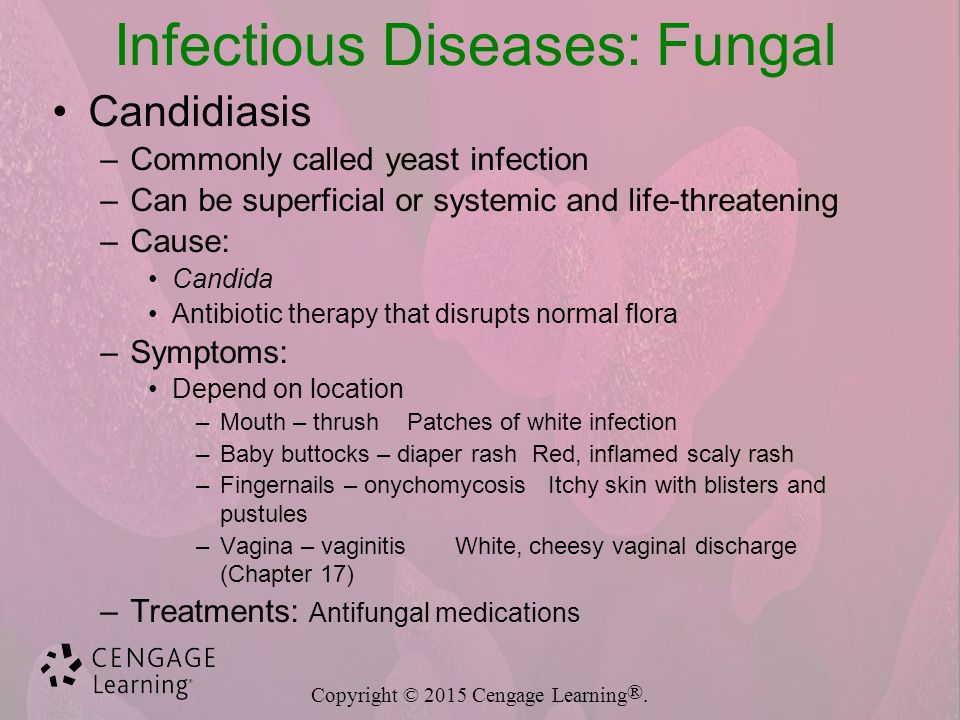
Dangerous yeast
Let’s make a digression in this place and explain why you can die from a fungal infection. The most common “fungal” human pathogens that cause dermatomycosis prefer to infect the skin, where they are protected from the host’s immunity and live in comfortable “cool” conditions.The no less famous Candida albicans, the causative agent of thrush, is already adapted to survive at human body temperature, but normally prefers mucous membranes. On the surface of the body, the fungus causes only discomfort and is relatively safe. In rare cases, candida infection becomes systemic, which means that the fungus enters the bloodstream and spreads throughout the body, colonizing internal organs. The presence of a fungus in the bloodstream is called candidemia and is the most common form of hospital yeast infection.Its main symptom is high temperature.
Due to the lack of pronounced specificity, fungal infection is confused with bacterial and, first of all, antibiotics are prescribed to the patient, which in this case will not help in any way – yeast must be fought with special fungicidal preparations. If left untreated, a person can die, for example, from septic shock or infection-induced internal organ damage.
If left untreated, a person can die, for example, from septic shock or infection-induced internal organ damage.
Mortality in candidemia averages 25-30 percent with an average incidence of 8-9 cases per 100,000 people.
The fact why yeast infections are common in hospitals and why they threaten the lives of patients in developed countries with a high level of medical care deserves a separate explanation.
Yeast from the genus Candida, as a rule, is considered conditionally pathogenic and is often part of the microflora of a healthy person. They can get out of control only with a significant weakening of the host’s immunity – as happens in the case of taking immunosuppressants after organ transplantation or long-term use of corticosteroids prescribed for other indications.The risk group also includes patients undergoing chemotherapy for cancer and long-term antibiotics, which suppress the activity of all microflora, except for yeast. In addition, infection can be introduced into the bloodstream by accident during abdominal surgery or intravenous catheter placement. With the increasing availability of all these procedures, the incidence of systemic infections, which were considered very rare in the middle of the 20th century, also increased.
With the increasing availability of all these procedures, the incidence of systemic infections, which were considered very rare in the middle of the 20th century, also increased.
However, in the countries of the “middle echelon” the prevalence of yeast infections is naturally higher – for example, the maximum number of cases of candidemia was registered in Pakistan, where in 2016 it was 21 cases per 100 thousand population.
Of course, carriers of the human immunodeficiency virus who do not take antiretroviral therapy are primarily at risk, and where the HIV situation is worse, fungal infections are more common.
Until recently, the aforementioned Candida albicans was the main culprit for candidemias, but in recent years it has largely been supplanted by other Candida species. In particular, these are Candida glabrata and Candida krusei, which are naturally highly resistant to drugs from the azole group, which are often prescribed in the first line of therapy against Candida infection.
However, in 2016, when outbreaks of infections caused by Candida auris occurred on several continents, some hospitals found that this yeast was the cause of almost 40 percent of candidemias, crowding out its other “colleagues in the shop”. At the same time, some clinical isolates of Candida auris are highly resistant not only to azoles, but also to second-line drugs, which are usually used in the treatment of azo-resistant strains, in particular echinocandins.
Although auris was found in Japan and shortly thereafter in South Korea, there have been no outbreaks of infections with the new fungus in this part of Asia. As a hospital storm, it primarily manifested itself in South Asia, in particular in India and Pakistan, as well as in South America (Colombia and Venezuela) and South Africa.
Within a short time, the fungus caused local outbreaks of candidaemias in the US and UK.
Genome-wide studies of clinical isolates from all four locations – East and South Asia, South America and Africa – have shown that the fungus has its own genetic characteristics in each of them. It seems that the new infection arose independently and almost simultaneously in four parts of the world (while the East Asian branch turned out to be relatively harmless, “lit up” mainly as a causative agent of ear infections, but not systemic infections).
It seems that the new infection arose independently and almost simultaneously in four parts of the world (while the East Asian branch turned out to be relatively harmless, “lit up” mainly as a causative agent of ear infections, but not systemic infections).
Relatively quickly, the fungus arrived in Russia – the first case of detection occurred in October 2016, in the intensive care unit of a Moscow hospital. Candida auris was isolated from the urine of a patient from Central Asia.
In total, by the end of 2017, the fungus was found in 49 patients admitted to the intensive care unit due to multiple injuries. Most of them underwent surgery and all received broad-spectrum antibiotics. Nineteen people developed candidemia, and eight of them subsequently died. Molecular genetic analysis of several isolates of C. auris and full genome sequencing of one of them showed that they all belong to the South Asian branch, first identified in India.
Originally from the sea
In the short time that humanity is familiar with Candida auris, scientists have managed to study in detail its genome and phenotype, but have not yet been able to understand where it came from. It is known that it is quite far from other pathogens of candidemia, but it has a similar set of virulence factors and leads to the development of exactly the same infection symptoms.
It is known that it is quite far from other pathogens of candidemia, but it has a similar set of virulence factors and leads to the development of exactly the same infection symptoms.
Molecular analysis of the collections of pathogens isolated before 2009 did not reveal C.auris (however, a more detailed analysis still spotted its tracks in 1996 in South Korea). Apparently, this yeast has never been included in the human microbiota either.
They were not found in other ecological niches either. Unlike the same C. albicans, which lives not only on humans, but also on animals, and even excreted from the soil, C. auris was still found mainly in hospitals. However, in order to slightly dispel the mystical veil around this pathogen, it is worth noting that modern analysis of the fungal microflora of human skin has revealed some species that have not yet been described (which have not yet been noticed in anything bad).C. auris also has unique features that distinguish it from its relatives in the genus Candida. This fungus can grow at temperatures up to 42 degrees Celsius, while others only survive at 37 degrees. In addition, it is resistant to high salt concentrations, which may indicate its marine origin.
This fungus can grow at temperatures up to 42 degrees Celsius, while others only survive at 37 degrees. In addition, it is resistant to high salt concentrations, which may indicate its marine origin.
These factors probably contribute to its ability to survive for a long time on surfaces and on human skin in particularly hot and salty places.One of the latest hypotheses about the origin of the pathogen (which we have already mentioned) suggests that C. auris originally lived in humid saline ecosystems, which are abundant in South and East Asia, where the first outbreaks occurred.
The genes encoding virulence factors are likely to have been acquired by the fungus through horizontal transfer from a related yeast from the genus Candida, which, as mentioned above, can inhabit a wide range of ecosystems, not just the human body.In addition, drug resistance could be a consequence of the spread of fungicides, with the help of which they fight against fungal plant pathogens, in the environment.
Find yourself an ecosystem
Not only yeast of the genus Sandida (of which, by the way, there are no less than 150 species) cause dangerous infections. We will mention just a few of the most common types of fungi that cause fatal diseases in people at risk. Mushrooms from the genus Aspergillus can cause not only systemic infections, but also pneumonia and allergic lung diseases.One study found that from 2001 to 2010 in France, the number of infections caused by aspergillus increased by four percent each year. The mortality rate from such infections is about 50 percent. Aspergillus also belongs to the category of conditional pathogens, its spores surround us everywhere.
One of the infections that often leads to death of HIV-infected people as a result of the development of meningitis is Cryptococcus neoformans. About a million people living with HIV are infected with this fungus every year.
Coccidioidomycosis, or California fever, is caused by the fungus Coccidioides immitis, which lives in the arid soils of parts of the United States and Central and South America. Since 1998, the incidence of California fever has increased severalfold. It can be infected by inhaling the spores of the fungus.
Since 1998, the incidence of California fever has increased severalfold. It can be infected by inhaling the spores of the fungus.
In most people, the disease does not develop or is mild. People at risk are advised to try not to breathe dust when in regions where the pathogen is common.In addition to the aforementioned categories of people, in this case, the elderly and pregnant women are also at risk. Most infections have been reported in Arizona and California.
The dimorphic fungus Histoplasma capsulatum, when growing in the environment, forms hyphae, and when it enters the human body, it chooses a yeast-like form of existence. This organism is dangerous for healthy people, although its main “clients” are still people with weakened immunity.
In the United States in the Midwest, histoplasmosis was the most common cause of complications in organ transplant patients until 2008, causing 6 cases per 100,000 people in the Midwest.Like the California fever, its range of distribution was limited to certain regions of the United States, Central and South America. Recently, however, histoplasm has also been found in China, India, Central Africa and Madagascar.
Recently, however, histoplasm has also been found in China, India, Central Africa and Madagascar.
The last two examples show how a local endemic organism, initially adapted to exist in a certain ecosystem (which Candida auris apparently was originally), accidentally became a dangerous pathogen and, together with its carriers, left its habitat.
An important factor in the spread is probably the large number of movements between parts of the world that people make. However, other mammals can also carry fungal infections, not to mention plants, amphibians and insects.
Moreover, the adaptability of the same Candida auris to high temperatures opens up the possibility for it to infect birds whose body temperature is higher than that of mammals. Perhaps it was the birds that helped this fungus spread so quickly around the world.
Unlike bacterial pathogens, which cannot exist outside the host’s body, fungi do not depend on animals – for them, this is just another convenient ecosystem that they discover for themselves mostly by accident. Climate change, leading not only to an increase in temperatures, but also, for example, to desertification of lands, makes them evolve and at the same time opens up new “levels” of the game called the struggle for existence.
So far, the prevalence of fungal infections has not really worried the health authorities – against the background of cancer, diabetes and HIV, they did not look like a global threat.However, the incredible success story of Candida auris makes it clear that it is time for humanity to prepare for new challenges.
Source: N + 1
90,000 Candidiasis (thrush) – signs, symptoms, causes, diagnosis and treatment of the disease.
Vaginal yeast infection (thrush) is a fungal infection that causes irritation, discharge and intense itching of the vagina and vulva – the tissues near the vaginal opening.
Also called vaginal candidiasis , vaginal yeast infection affects up to 3 out of 4 women at some point in their lives.Many women experience at least two episodes.
Vaginal yeast infection is not considered a sexually transmitted infection. But there is an increased risk of vaginal yeast infection during the first regular sexual activity. There is also some evidence that infections can be associated with the mouth and genital contact (oral-genital sex).
Medicines can effectively treat vaginal yeast infections. If you have recurrent yeast infections – four or more in a year – you may need a longer course of treatment.
Symptoms
Symptoms of a yeast infection can range from mild to moderate and include:
1. Itching and irritation in the vagina and vulva
2. Burning sensation, especially during intercourse or while urinating
3. Redness and swelling of the vulva
4. Vaginal pain and soreness
5. Vaginal rash
6. Thick, white, odorless vaginal discharge with a curd look
7.Watery vaginal discharge
Complicated yeast infection
You may have complicated vaginal candidiasis if:
1. You have severe signs and symptoms such as extensive redness, swelling and itching that lead to tears, cracks or ulcers
2. You have four or more yeast infections per year
3. Your infection is caused by a less typical type of fungus
4. You are pregnant
5. You have uncontrolled diabetes
6.Your immune system is weakened due to certain drugs or conditions, such as HIV infection or cancer
When to see a doctor
Make an appointment if:
1. This is the first time you have symptoms thrush
2. Are you not sure if you have a yeast infection
3. Your symptoms do not improve after treatment with OTC antifungal vaginal creams or suppositories
4.You develop other symptoms
Causes
The fungus candida albicans is responsible for most vaginal yeast infections.
Your vagina naturally contains a balanced mixture of yeast, including candida, and bacteria. Some bacteria (lactobacilli) act to prevent yeast overgrowth.
But this balance can be upset. An overgrowth of candida or penetration of the fungus into the deeper layers of vaginal cells causes signs and symptoms of a yeast infection.
Yeast overgrowth can result from:
1. Use of antibiotics that cause an imbalance in the natural vaginal flora
2. Pregnancy
3. Uncontrolled diabetes
4. Weakened immune system
5. Taking oral or oral contraceptives therapies that increase estrogen levels
Candida albicans is the most common type of fungus that causes yeast infections. Yeast infections caused by other types of candida can be more difficult to treat and usually require more aggressive therapy.
Risk factor
Factors that increase the risk of developing a yeast infection include:
1. Use of antibiotics. Yeast infections are common in women taking antibiotics. Broad-spectrum antibiotics that kill a range of bacteria also kill healthy bacteria in the vagina, leading to overgrowth of yeast.
2. Increased estrogen levels. Yeast infections are more common in women with higher estrogen levels, such as pregnant women or women taking high doses of estrogen birth control pills or estrogen hormone therapy.
3. Uncontrolled diabetes mellitus. Women with poorly controlled blood sugar are at greater risk of yeast infections than women with well controlled blood sugar.
4. Weakened immune system. Women with low immunity – for example, from corticosteroid therapy or HIV – infections – are more prone to yeast infections.
Prevention
To reduce the risk of vaginal yeast infections, wear underwear that has a cotton crotch and does not fit too tightly.
Lack of:
1. Tight-fitting pantyhose
2. Douching, which removes some of the normal bacteria in the vagina that protects you from infection
3. Scented female products, including bubble baths , pads and tampons
4. Very hot baths
5. Unnecessary use of antibiotics, for example, for colds or other viral infections
6. Staying in wet clothes, such as swimwear and training clothes, for a long period of time
Diagnostics
To diagnose candidiasis, your gynecologist can:
1.Asking questions about your medical history. This may include collecting information about past vaginal or sexually transmitted infections.
2. Inspect the pelvic organs. Your doctor will examine your external genitals for signs of infection. Your doctor then places an instrument (speculum) in your vagina to keep the vaginal walls open to examine the vagina and cervix – the lower, narrower part of your uterus.
3. Check for vaginal discharge.Your doctor may send a sample of vaginal fluid for testing to determine the type of fungus that is causing the yeast infection. Identifying the fungus can help your doctor prescribe a more effective treatment for recurrent yeast infections.
Treatment
Treatment for thrush depends on the severity and frequency of your infections.
For mild to moderate symptoms and infrequent episodes, your doctor may recommend:
1. Short course of vaginal therapy.Taking antifungal medications for three to seven days usually clears up the yeast infection.
2. Single oral treatment. Your doctor may prescribe a single, single oral dose of fluconazole. Oral medications are not recommended if you are pregnant. For more severe symptoms, you can take two single doses three days apart.
3. See your doctor again if treatment does not correct your symptoms or if your symptoms return within two months.
If your symptoms are severe or you have frequent yeast infections, your doctor may recommend:
1. Long-term vaginal therapy. Your doctor may prescribe an antifungal medication taken daily for two weeks and then once a week for six months.
2. Multi-dose oral preparation. Your doctor may prescribe two or three doses of antifungal medications to be taken by mouth instead of vaginal therapy. However, this therapy is not recommended for pregnant women.
Alternative Medicine
Alternative medicine has not been proven to treat vaginal yeast infections. Certain complementary and alternative therapies may provide some relief when combined with your doctor’s care.
Talk with your doctor about alternative vaginal yeast infection treatments that may be safe for you.
How to recognize and treat yeast infections in men
The so-called “thrush” – an infection caused by the yeast “candida” – is considered primarily a female ailment.Three-quarters of all adult women encounter it at least once in their lifetime. However, men can also get infected with this unpleasant infection. Here’s what you need to know about candidiasis in men.
ADVERTISING – CONTINUED BELOW
Can men get a yeast infection?
Yes, men, as women, are quite susceptible to this infection, but due to the fact that men go to doctors less often, preferring to ignore the symptoms or try to treat themselves, it is difficult to determine exactly how many men catch thrush every year.
Candida fungi, pathogens, are present in trace amounts on the skin of every person. Typically, beneficial bacteria provide natural defenses against them by maintaining a healthy pH level. However, in a warm and humid environment (for example, it often forms on our genitals) the yeast fungus actively multiplies, and we experience all the “delights” of candidiasis.
ADVERTISING – CONTINUED BELOW
In men, this infection most often leads to balanitis, a disease in which the glans penis becomes inflamed.It is important to consult a doctor immediately when the first symptoms appear – then the treatment will be easy and short-lived, and the likelihood of a relapse of the disease is minimal.
Symptoms of thrush in men
If you have noted all of the symptoms described below, or at least some of them, do not tolerate, do not wait until it passes by itself, and even more so do not self-medicate – see a doctor immediately.
ADVERTISING – CONTINUED BELOW
- Itching;
- Irritation;
- White cheesy discharge;
- Swelling or puffiness;
- Redness;
- Increased sensitivity;
- General groin pain.
Who is at risk?
Sometimes the cause of infection can be a general decrease in immunity. But most often, the cause of the appearance of an infection or a factor that sharply increases its likelihood is:
Insufficient hygiene
The more dirt and bacteria accumulate in the groin area, the better the yeast fungi feel – after all, this is their breeding ground. Thoroughly cleanse the groin area and pay special attention to the foreskin area, thoroughly cleanse every fold of skin.
Cuts, wounds and other damage to the skin
Even chafing due to too tight linen or prickly heat caused by excessively warm weather can cause infection. Try to wash especially thoroughly on warm and hot days, and thoroughly disinfect all small wounds and cuts.
ADVERTISING – CONTINUED BELOW
Unprotected intercourse
Candidiasis, like most genital infections, is easily transmitted to a partner during sexual intercourse, especially unprotected one.If your partner has candidiasis, it is best to give up sexual intercourse altogether until complete recovery.
Diabetes
If you have type 1 or type 2 diabetes, your personal risk of developing thrush increases dramatically.
A course of antibiotics
If you have recently received antibiotic treatment, you are also at increased risk: the medicine destroys the beneficial bacteria that inhibit the growth of yeast, and infection is very likely.
Why are yeast infections dangerous in men?
If you take action in time, consult a doctor and carefully follow all his recommendations – practically nothing. The symptoms of the disease are unpleasant, but with proper treatment, they go away rather quickly and without consequences. But if the disease is ignored or the treatment is not taken to the end, very unpleasant consequences are possible:
- The skin of the penis becomes more rigid and rough, which makes it difficult to urinate;
- Scars form on the penis, which can compress the foreskin severely, making it less mobile;
- Chronic inflammation of the foreskin may develop;
- In the most serious cases, infections can become chronic and require surgery – a circumcision procedure.
Treatment of thrush in women and men
Thrush is most common in females, but men may well detect its symptoms. The causative agent of the disease is a fungus of the genus Candida, and it is a resident of normal human microflora. The reasons for his aggressive behavior and methods of dealing with this condition will be discussed below.
What is thrush
Thrush is a condition that was triggered by the flowering of fungi of the genus Candida, which is why the natural microflora was disturbed.Candidiasis causes discomfort in the external genital area.
The danger of candidiasis
Thrush is not a dangerous condition, since it does not belong to any separate disease and cannot affect the condition of the cervix and vaginal walls in women. The occurrence of such a condition as candidiasis indicates a malfunction of the body. Therefore, recurrent thrush requires an examination to find out the cause of its occurrence. If you get rid of the cause, then you can forget about the further appearance of candidiasis.
Causes
The reasons why thrush can occur in women:
- pregnancy;
- violation of microflora;
- weakening of the immune system;
- endocrine diseases;
- use of contraceptive drugs;
- non-compliance with hygiene standards.
Causes of thrush in men:
- non-compliance with hygiene standards;
- result of unprotected intercourse, transmission of candida pathogen from a partner with thrush;
- abrupt change in climatic conditions;
- the use of aggressive detergents;
- weakening of the immune system;
- long-term use of an antibiotic.
Symptoms
With thrush in women, the following symptoms are most often observed:
- Painful sensations arising from intercourse.
- Swelling and redness of the mucous membranes.
- Pain with cramps when urinating.
- Pain with the release of curdled contents from the genital tract, odorless.
- There is an itching and burning sensation in the vagina, which can periodically or regularly increase during sleep, after intercourse, after bathing and during menstruation.
In men, there is a burning sensation and pain during emptying of the bladder, constant or periodic itching, white bloom on the head of the penis.
Diagnostics
To determine the presence of candidiasis, you will need to take a scraping and send it for further research to a laboratory to identify pathogenic microflora.
The main purpose of laboratory diagnostics is to establish the presence of Candida fungus. If the diagnosis is carried out in women, then the diagnosis of thrush is established only with a large indicator of yeast-like fungi, as well as additional symptoms of vaginal dysbiosis.
Candidiasis in men is established with a small number of fungi, which indicates the presence of infection. Severe symptoms will allow the urologist to conduct a more detailed examination.
Which doctor to contact
If symptoms that indicate candidiasis appear, a woman should consult a gynecologist, and a man should consult a urologist.
Treatment
All medical procedures related to candidiasis should be carried out only under the supervision of the attending physician.When trying to self-treatment, thrush can go into an acute form, into a chronic one, and there is also a possibility of an exacerbation of the condition, which will lead to further difficult treatment.
Treatment of thrush includes:
- Antibiotic therapy, personal hygiene, support and protection of the immune system.
- Compliance with a diet in which it will be necessary to limit the intake of carbohydrates.
- Complete rejection of bad habits.
- The use of prescribed medicines to combat thrush.
Medicines
In the treatment of thrush, which proceeds in an easy stage, it will be enough to use local remedies as vaginal ointments, suppositories and tablets. The most popular drugs include:
- Natamycin;
- Nystatin;
- Miconazole;
- Clotrimazole;
- Isoconazole;
- Ketoconazole.
Doctors most often prescribe drugs with clotrimazole, and the use of vaginal tablets is avoided, since they can suppress the normal microflora of the vagina.
Pills for candidiasis are prescribed by specialists in a more advanced case, as well as in the chronic course of thrush. Almost all drugs have fluconazole as the active ingredient; itraconazole can be used as an alternative.
In comparison with women, thrush in men proceeds more easily and, as a treatment, an experienced specialist will prescribe local treatment in the form of ointments, which will need to be applied to the affected areas.In more severe cases, oral medications such as Diflucan and Fluconazole may be prescribed.
Diet
For thrush in women, the diet plan should be based on the consumption of foods that have antibacterial and antifungal effects. These include:
- garlic;
- seafood;
- parsley;
- buckwheat;
- white rice;
- broccoli;
- natural yoghurts;
- oatmeal;
- cucumbers.
For men, when diagnosing candidiasis, the diet should be adhered to for up to 12 months, at least 4 months. At this time follows:
- Avoid the consumption of spicy foods and various sauces.
- Completely refuse alcohol for the entire period of treatment.
- There are only low-fat dishes, those that are steamed, boiled or stewed.
Prevention
Prevention of thrush:
- It is important to wear underwear made exclusively from natural fabrics.It should be such that it does not rub anywhere;
- when playing sports, it is recommended to wash your sports uniform as often as possible;
- in order to maintain the hygiene of the genitals, they should be washed only with water, while using a special mild soap;
- hygiene products should be free from dyes and fragrances;
- For those with diabetes mellitus, blood sugar control must be constant;
- Eat a healthy diet and take active walks in the fresh air to support your immune system.
90,000 Tests for fungal infections – donate blood, scraping for fungus in St. Petersburg, price in SZCDM
According to the official international statistics on the prevalence in the world fungal infections for many years in a row ranked second among all skin diseases. They not only reduce the quality of life and cause discomfort, but also provoke allergic reactions, chronic inflammatory processes and many other pathologies.
Due to the peculiarities of their microbiological nature, fungal diseases can be actively transmitted from the carrier to a healthy person, and, in addition to the skin, affect the nail plates, hair, internal organs and cause various pathogenic changes. Individual fungi are prone to relapse, have a rather long incubation period and very similar external manifestations. At the same time, some types of mycoses are treated only with oral medications, others – with cutaneous forms, therefore it is categorically impossible to self-medicate and, at the first symptoms, consult a specialist.
When tests for fungal infections are ordered
On the basis of external signs, it is possible only to initially diagnose a fungal disease. Therefore, in case of redness of the skin, focal lesions of the smooth and scalp, as well as itching in the foot or skin folds, changes in the shape and color of the nail plate, dermatologists prescribe laboratory tests. This allows you to correctly diagnose the nosological form, and, therefore, select the most effective complex of therapy, take the necessary measures to localize the infection and minimize possible side effects.
Types of fungal diseases
Microscopic pathogenic fungi in medical practice have a common name – mycoses (Greek mycosis). Today, more than 100 species of parasitic and pathogenic microfungi are classified, and we will single out the main infections that affect adults and children.
Dermatomycosis
Common fungal infections that affect the skin, nails and hair. The source of infection can be a person or an animal. They manifest themselves with various symptoms, we will designate only the most common diseases in our geographic zone:
- Rubromycosis is a disease caused by the anthropophilic fungus Trichophyton rubrum.Differs in a variety of clinical manifestations and localization of foci in any part of the body, can affect smooth skin, hair follicles and nails;
- mycosis of the foot (epidermophytosis), also affecting the interdigital folds. Very similar to candidal infection, and sometimes polymycotic infection occurs;
- favus is a rare form accompanied by severe baldness of the head. Can be transmitted through combs, underwear, and shaving and cutting tools;
- microsporia – trichomycosis caused by the microsporum fungus.On smooth skin, it appears as red spots of a clear shape with a peripheral roller, and on the scalp – small flaky foci;
- Trichophytosis (synonym for ringworm). Externally manifests itself as pink-red focal lesions of the skin on any part of the body;
- epidermophytosis of skin folds. Is accompanied by itching, redness and flaking.
Keratomycosis
Mycoses predominantly of the stratum corneum.Among them, the most famous are piedra, erythrasma and bran lichen.
Superficial mycoses are often ignored by many inhabitants, because if pityriasis versicolor can be initially identified by yellowish-brown spots covered with pityriasis scales, then erythrasma is often perceived as age-related darkening of the skin. This is due to the fact that the disease progresses slowly and is localized on the inner thighs, in the groin folds and under the mammary glands in women. Faint darkening of the skin affected by erythrasma is covered with small scaly scales, and although the disease almost does not cause itching, it sharply reduces the protective properties of the skin and spoils the appearance of the infected.
Candidiasis
Diseases caused by yeast-like fungi of the genus Candidosis, which includes more than 150 varieties. They are considered the most dangerous and most common, as they are found all over the world and can be transmitted from people, birds and pets. Moreover, in addition to skin manifestations, candidiasis can:
- Affect mucous membranes;
- penetrate deeply into tissues and organs;
- cause septic diseases and allergic changes in the body.
Candidiasis can manifest as a localized and widespread rash on the hands and feet, lesions of the nail folds and scalp, in the form of stomatitis, cheilitis and gingivitis. With internal infection, they cause vulvovaginitis, urethritis, pleuropneumania, endocritis, meningitis and other diseases.
Visceral and systemic mycoses
Fungal lesions of internal organs caused by infection with taxonomic microfungi and accompanied by severe lesions of the skin, visceral (internal) organs, subcutaneous tissue, nervous system and even the musculoskeletal system.This group includes more than two dozen fungi, among which there are pathogenic and opportunistic. The most common are actinomycosis, aspergillosis, histoplasmosis, coccidioidosis, sporotrichosis, chromimycosis and others.
As a rule, deep mycoses are indirectly transmitted and difficult to diagnose. Some pathogens demonstrate an amazing vitality and resistance to drug therapy, high pathogenicity and significant contagiousness and can lead to disability and death.Most of the systemic mycoses are opportunistic infections in patients with hepatitis and AIDS.
Methods for the diagnosis of fungal infections
The Northwest Center for Evidence-Based Medicine offers traditional and innovative research methods. We carry out the following analyzes:
Microbiological Methods
Microscopy – the most affordable and simplest diagnostic method.The study is aimed at confirming infection with superficial mycosis, for which biological material is taken from the patient, which is potentially considered infected: scraping of a pathologically altered nail or skin, cilia, hair. Refers to qualitative analyzes and only allows you to establish or refute the fact of infection. The study takes several days: the resulting material is processed (stained) in a certain way and transferred for microscopic examination to identify elements of the fungus (spores, hyphae).
Microscopy allows you to quickly confirm mycosis, but the type of pathogen and its quantitative concentration is established only for yeast-like and moldy species. Therefore, it is often supplemented with cultural research (bakseeding). The results of microbiological studies are necessarily interpreted by the attending specialist.
Enzyme-linked immunosorbent assay (ELISA)
Enzyme-linked immunosorbent assay is a modern and highly reliable method for identifying fungi in the patient’s venous blood.It is a qualitative and quantitative method and can be used as a primary diagnosis and act as a confirmatory analysis of superficial and visceral mycoses.
The method is based on the detection and identification of an immunoglobulin protein for a specific pathogen. For antibodies and antigens, reliable information is obtained about infection with aspargillosis, candidiasis, cryptococcus and dimorphic microfungi. The test result is interpreted as “positive” (there is an infection) or “negative” (there is no fungal infection).In some cases, the study can give a questionable result, as a rule, this happens if the patient has recently taken antibacterial drugs.
The research takes from 1 to 5 days. If it is required to identify the dynamics of the disease, ELISA is performed at a frequency of 14 days.
PCR
High-precision research method based on polymerase chain reaction and takes no more than 3 days. It can be used to register any fungal pathogens, but has one drawback – directed research.This means that the laboratory must obtain information about the specific species of micro-fungus, the spores and hyphae of which must be identified.
For analysis, blood, sputum, prostate secretions or urine can be provided, but in the last three options, it is necessary to ensure the maximum purity of the biological material. The most effective and appropriate in the complex diagnosis of systemic and visceral forms of fungal diseases. The study produces qualitative and quantitative results that can only be interpreted by the attending physician.
Serological test
Classical studies, in which IgG-prepitins, enolase antigens, proteinases and mannoproteins are more often detected. The study is variable and can be based on agglutination reactions, titration and CSC. They allow you to get information only about the fact of carriage of a mycotic infection or indicate a previous fungal disease.
The analysis can be based on a study of blood serum.With extended serodiagnostics, the detection of a micro fungus can be carried out in other physiological fluids of the patient.
The results are interpreted by the treating specialist. In this case, the serological method is often used as a control study for the subsequent correction of therapy and to determine the effectiveness of treatment.
Risk groups and prevention of fungal infections
Fungal pathogens are found in minimal quantities on the skin of any person.But the uncontrolled use of medicines, especially hormones and antibiotics, can provoke their active growth and subsequent damage. It should also be noted that deep mycotic infections can enter the body through open wounds. Compliance with the sanitary rules for the treatment of any injuries associated with a violation of the skin minimizes the risks of disease with systemic and visceral microfungi.
High humidity and constant positive temperature is an ideal environment for the life and reproduction of microscopic fungi.Accordingly, the risk group a priori includes employees and visitors to swimming pools, fitness clubs, bath complexes, spas, as well as workers in laundries and catering establishments.
People with a weakened immune system, a depressed nervous system, a tendency to allergies, a critical underweight and metabolic disorders are also prone to fungal infections. Therefore, the most effective prevention is strengthening the immune system, impeccable adherence to the rules of personal hygiene and systematic examinations by a therapist and dermatologist.
Cost of services at SZDTSM JSC
The well-coordinated work of all employees and structural divisions of the center in combination with the rational organization of laboratory and functional research allows us to form favorable competitive prices for all types of services. At the same time, the North-West Center for Evidence-Based Medicine has state-of-the-art equipment and a unique system for coding biological material, which makes it possible to accurately identify the causative agents of fungal diseases and conduct all research promptly and strictly confidentially.
Where to get tested for fungal diseases
JSC “SZTsDM” is a modern enterprise with a developed structure of branches and terminals. Anyone can visit our laboratory at a convenient time for him to donate blood, sputum, scraping from smooth skin and hair, or a fragment of the nail plate in order to detect fungal lesions.
Analyzes
go to analyzes
90,000 Catheter-associated bloodstream infections (CVC-AIC) – together
Causes of CVC-associated infection: sources of CVC-AIK
CVC-associated infections in childhood cancer patients are usually caused by bacteria.Less commonly, CVC-AIC can be the result of a yeast or fungal infection.
Microbes on the skin
The skin contains a wide variety of microbes, including bacteria and fungi. CVC-AICs are often caused by bacteria on the skin of the patient or caregiver. The skin forms a protective barrier that prevents germs from entering the body. A catheter can become a gateway for microbes that penetrate either from the skin at the site of the CVC or from the CVC bushing that leads directly into the bloodstream. When the immune system is weakened due to an illness or its treatment, the body fights infection worse than a healthy one.
Damage to the mucosal barrier
CVC-AIK can also arise from bacteria that normally live in the oral cavity or intestines. Chemotherapy and radiation can impair mucosal barrier function in the mouth, throat, and gastrointestinal tract. This is called mucosal barrier damage (PMB). The mucosal barrier is the protective layer that usually keeps bacteria within the mouth and gastrointestinal tract. When this layer breaks down, bacteria can move to other parts of the body.In some cases, this leads to CVK-AIK. In cancer patients, CVC-AIK with damage to the mucosal barrier is a fairly frequent source of bloodstream infection.
Oral care is important to combat bacteria living in the mouth and reduce the risk of infection. Oral cavity care rules:
- Brush your teeth at least twice a day. Use a soft toothbrush and fluoride toothpaste. For infants or patients with mouth ulcers, use a damp gauze or mouth sponge.
- Change your toothbrush regularly, especially during periods of decreased immunity and neutropenia or during recovery from illness.
- Rinse your mouth as directed.
- Apply lip balm or lanolin moisturizer to lips to prevent dryness and cracking.
- Drink plenty of fluids to maintain water balance and prevent dry mouth.
Sexually transmitted diseases.Latent infections.
General
The most common STDs include genital herpes, chlamydia, human papillomavirus (HPV), genital warts (genital warts), chancre and syphilis (chancre), urethritis and vaginitis of gonococcal (gonorrhea) and non-phonococcal nature.
Here we will consider only a few of them.
Chlamydia
Bacterial infection spread by vaginal, oral and anal intercourse.In women, chlamydia can cause inflammation of the cervix and other pelvic organs, which are in the first place among the causes of ectopic pregnancies and female infertility. In men, chlamydial infection is manifested by inflammation of the urethra and epididymis (the organ in which sperm accumulates).
Gonorrhea (gonorrhea)
This is an infectious venereal disease in which the mucous membranes of the urogenital organs, the mucous membranes of the eyes, the oral cavity and the rectum are affected.
Genital herpes
Highly contagious viral disease, transmitted through sexual contact and enters the body through microcracks in the skin. The causative agent of the disease is the herpes virus of the second type. The main manifestations last three to four weeks, include tingling or mild soreness in the genital area, itching, small painful blisters and sores in the anus, buttocks or thighs, severe burning, especially when in contact with urine, enlargement of the inguinal lymph nodes.Even after the symptoms disappear, the virus remains in the body for life, periodically causing exacerbations. It is very important for pregnant women to treat herpes before delivery, as the virus can be transmitted to the baby through the birth canal. This can lead to blindness, brain damage, and sometimes death of the child.
Syphilis
A highly contagious infection caused by spirochetes and transmitted by any type of sexual intercourse. The disease is most common among people with multiple sexual partners, especially those who do not use barrier methods of contraception.The first stage of the disease begins approximately 10 days after infection and manifests itself as a painless hard chancre (ulcer) on the external genitals, anus, and less often fingers, hands, the infection can be brought into the oral cavity. As a result, the same ulcers appear in the mouth and throat. Another characteristic symptom is enlarged lymph nodes.
If untreated, the infection progresses and can progress into the following two stages. The third is the most severe.It is characterized by the appearance of a skin rash all over the body (including the palms and soles) that may persist or disappear intermittently, ulcers in the mouth and throat, swollen lymph nodes throughout the body, headaches, bone pain, fever, loss of appetite. and hair loss, meningitis (inflammation of the lining of the brain). At this stage, serious complications arise, such as paralysis, cardiac abnormalities, mental illness. The damage to the body can be severe enough to cause death.
Trichomoniasis
Sexually transmitted bacterial infection. It is caused by the unicellular parasite Trichomonas vaginalis . This parasite is betrayed during intercourse, in women the vagina is most often affected, and in men the urethra. Trichomoniasis often occurs without clinical manifestations (especially in men). Symptoms usually appear 20 days after infection. In women, it can be thick yellow-green vaginal discharge, pain during intercourse, an unpleasant odor from the vagina, redness of the external genitals, itching, pain in the lower abdomen.In men, discharge from the penis, painful and difficult urination.
Candidiasis is the most troublesome for women, in men it can go unnoticed. The disease is caused by a conditionally pathogenic fungus, similar to yeast for dough.
STD Symptoms (STIs):
- unusual discharge from the genitals;
- Various outgrowths of the mucous membrane of the external genital organs;
- itching;
- wounds and ulcers;
- skin rash;
- Pain and burning sensation when urinating.
Sexual infections are dangerous for their complications: inflammatory diseases of various internal organs, infertility, cancer, etc.
Only an experienced doctor can make an accurate diagnosis and identify the cause of the disease. In addition to the examination, you will have to conduct several studies for infections: take a vaginal smear (a smear from the urethra), make a bacteriological culture, donate blood for HIV and RW (analysis for syphilis), and PCR analysis will not be superfluous.
With STDs, self-healing does not occur, and the disappearance of some symptoms is explained by the transition of the disease into a latent form.Therefore, the earlier the diagnosis is made and treatment is started, the more chances are to be cured and not to get complications, such as infertility, both in men and women, acute conditions requiring surgical intervention, the possibility of intrauterine infection of the fetus in the womb, disturbances in the course of pregnancy and childbirth, the birth of an unviable or sick child, or even the death of an infected person (for example, from AIDS or hepatitis).

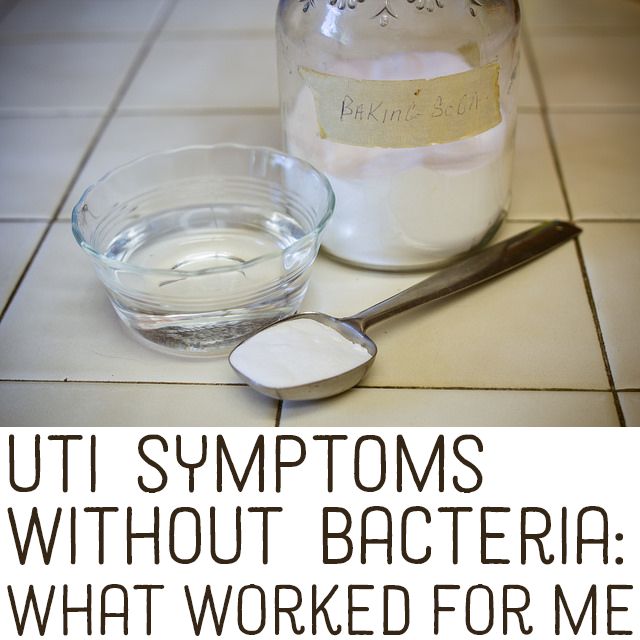
 These medicines contain oil, which can weaken rubber.
These medicines contain oil, which can weaken rubber. You repeat this treatment for several days.
You repeat this treatment for several days.

 You could have another problem, such as a bacterial vaginal infection or a sexually transmitted infection (STI), that needs different treatment.
You could have another problem, such as a bacterial vaginal infection or a sexually transmitted infection (STI), that needs different treatment.

 Sexually transmitted diseases treatment guidelines, 2015. MMWR, 64(RR-03): 1–137. http://www.cdc.gov/std/tg2015. Accessed July 2, 2015. [Erratum in MMWR, 64(33): 924. http://www.cdc.gov/mmwr/preview/mmwrhtml/mm6433a9.htm?s_cid=mm6433a9_w. Accessed January 25, 2016.]
Sexually transmitted diseases treatment guidelines, 2015. MMWR, 64(RR-03): 1–137. http://www.cdc.gov/std/tg2015. Accessed July 2, 2015. [Erratum in MMWR, 64(33): 924. http://www.cdc.gov/mmwr/preview/mmwrhtml/mm6433a9.htm?s_cid=mm6433a9_w. Accessed January 25, 2016.]
